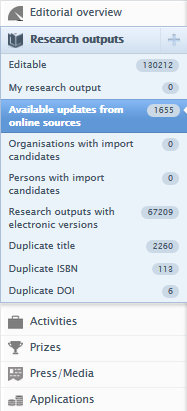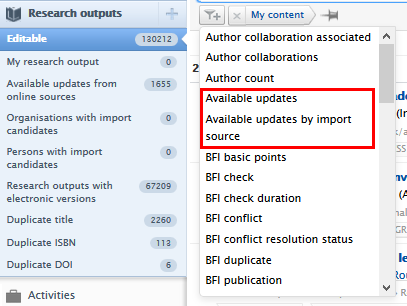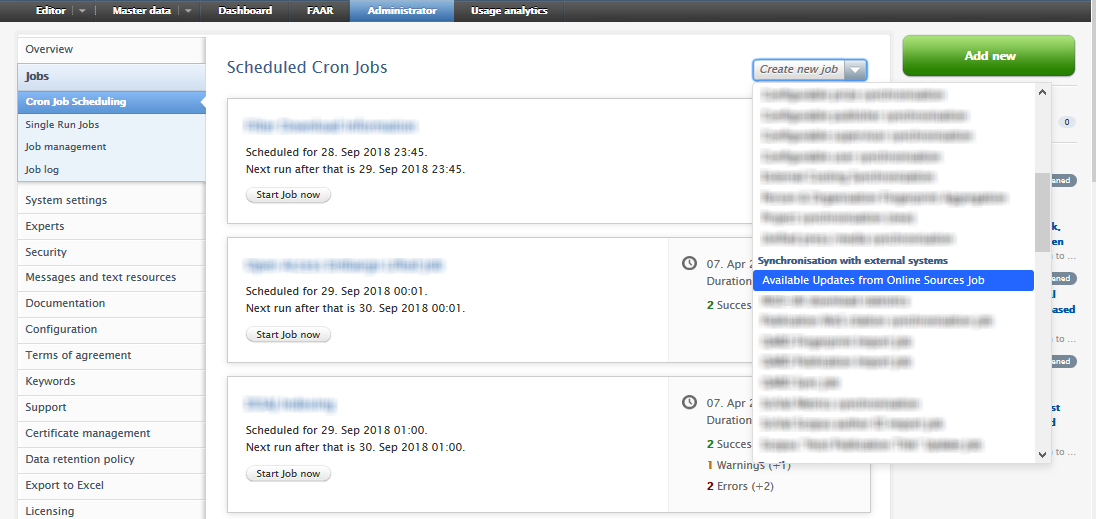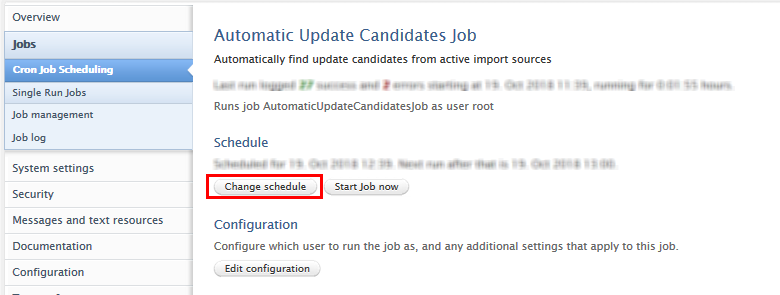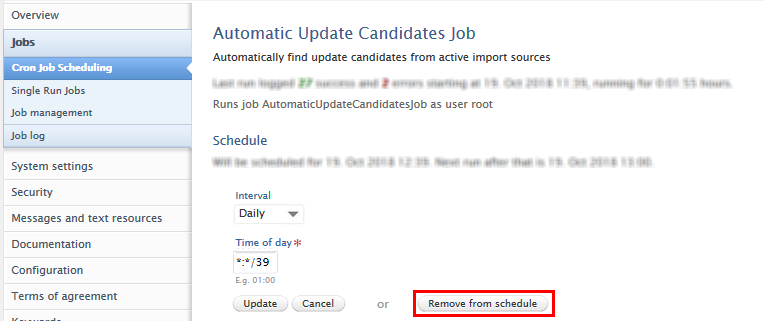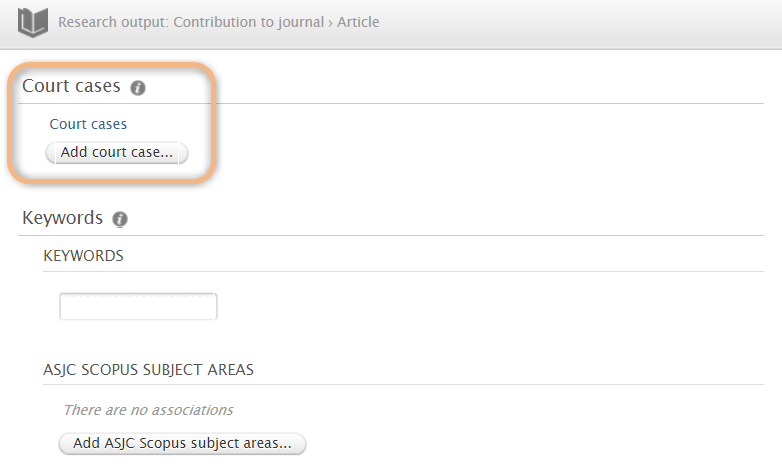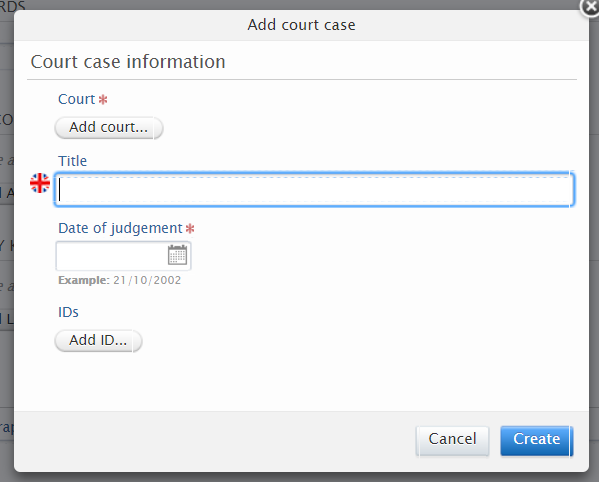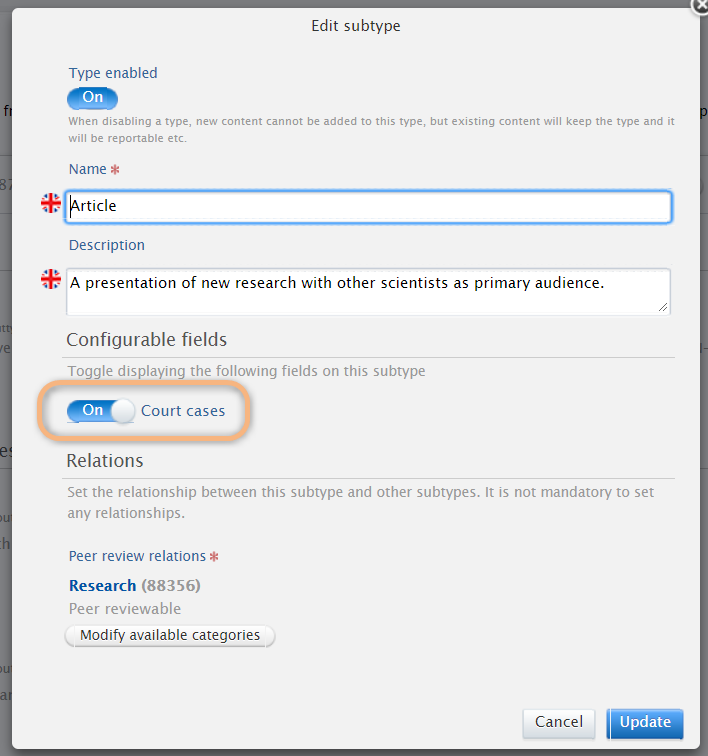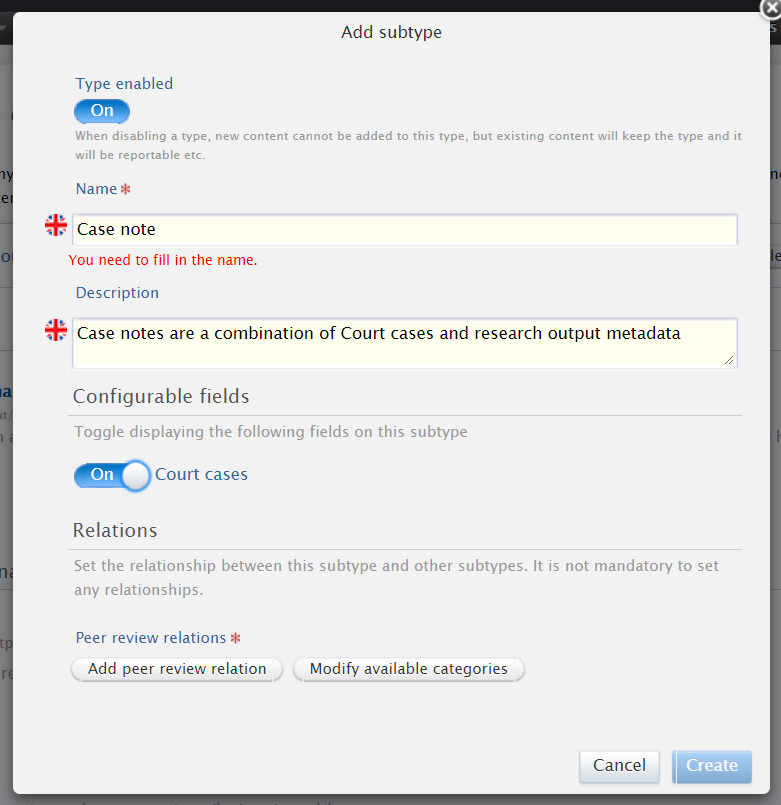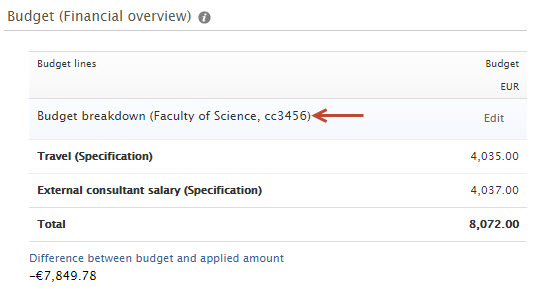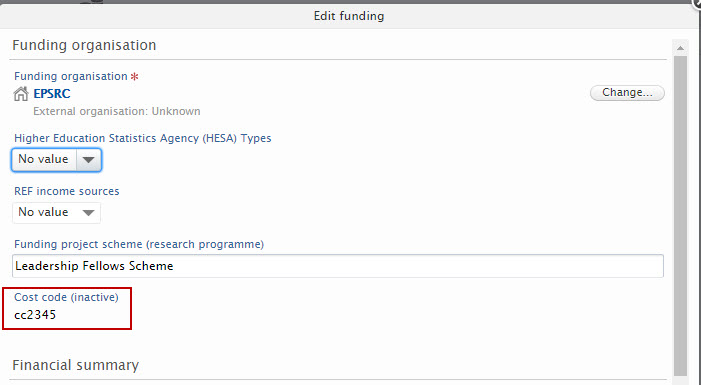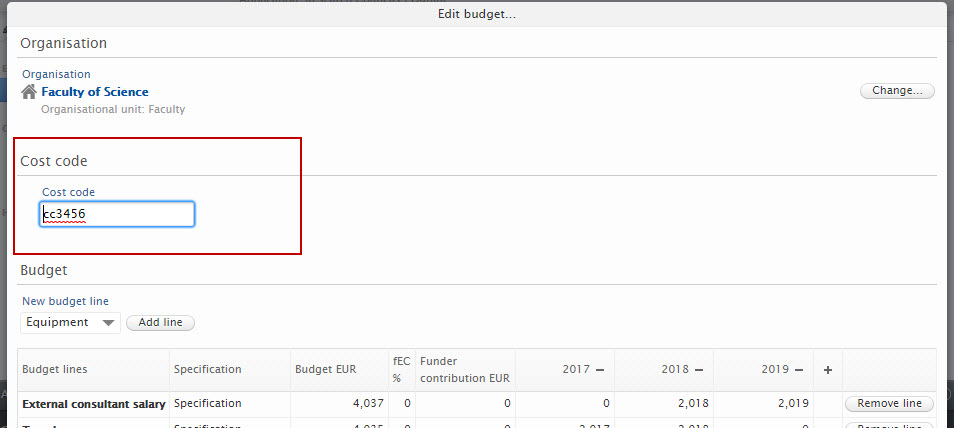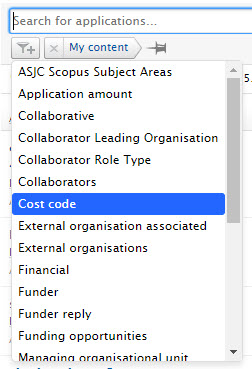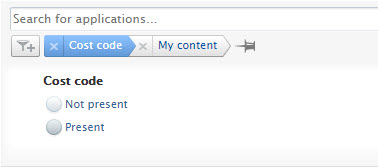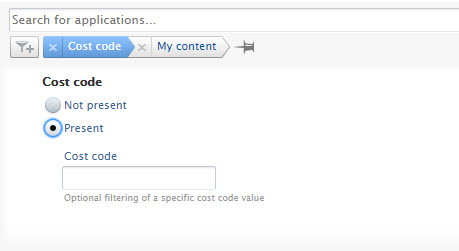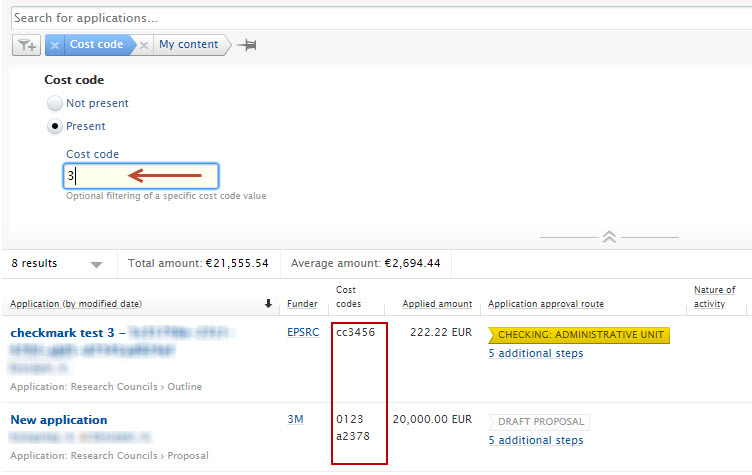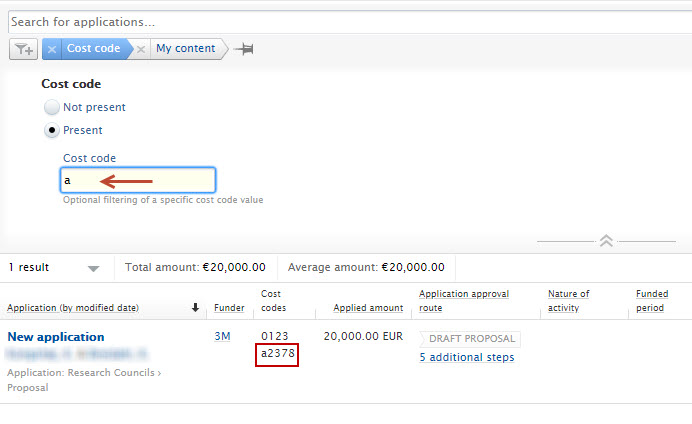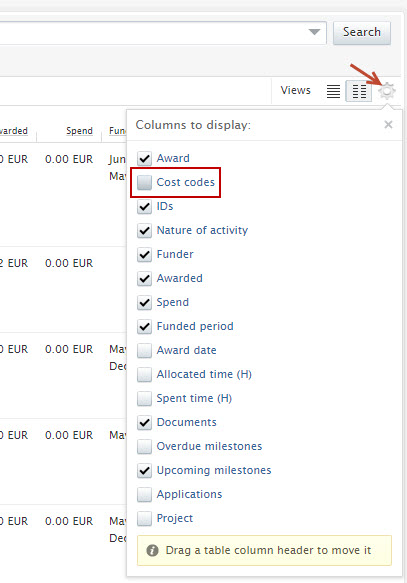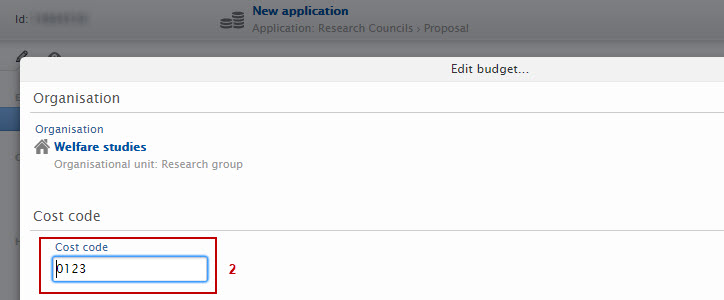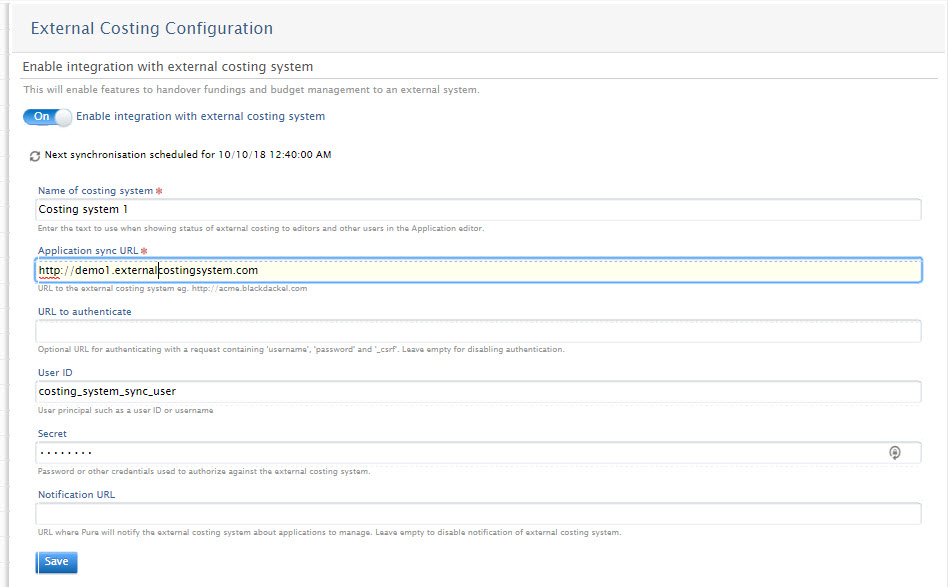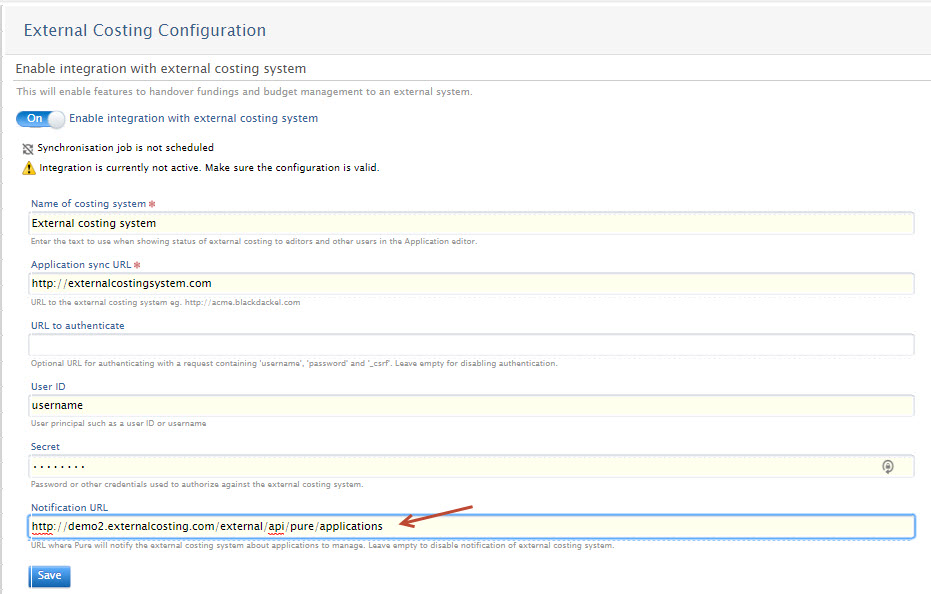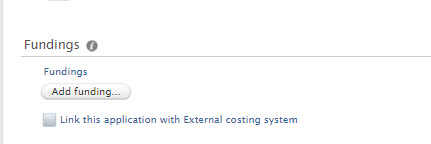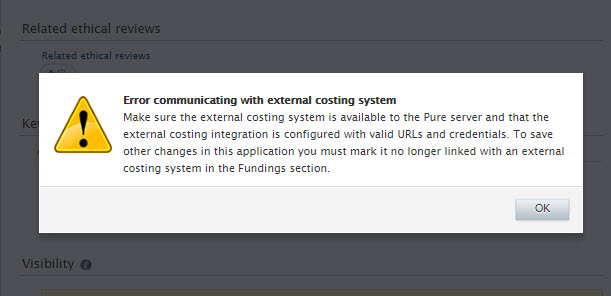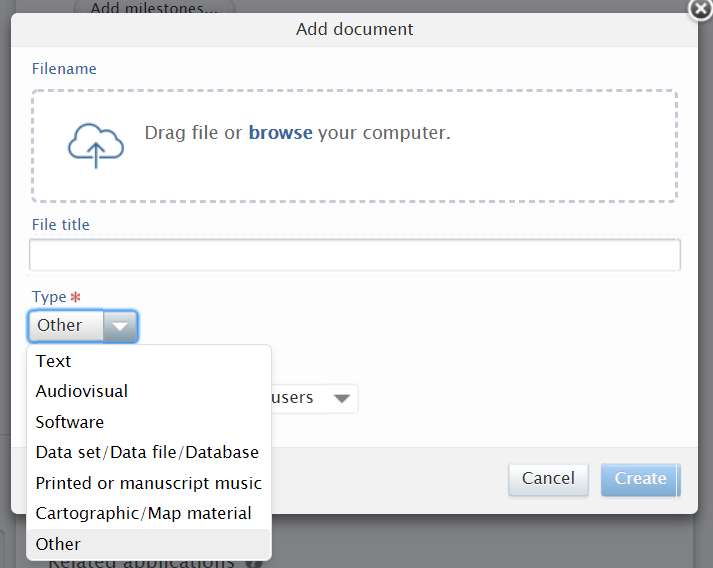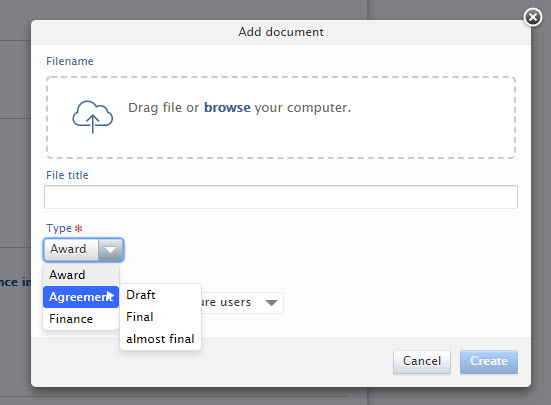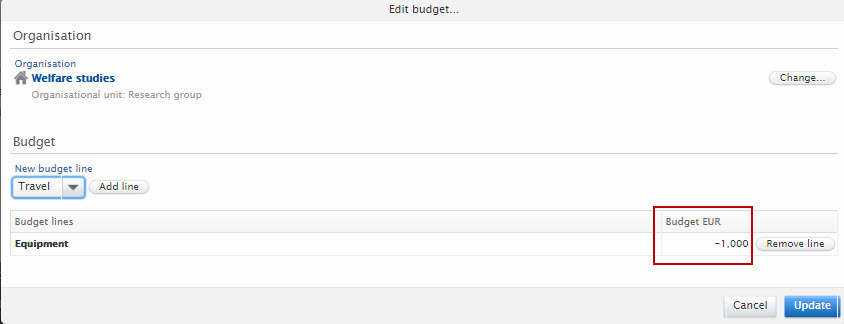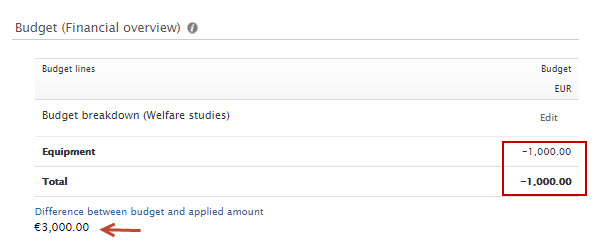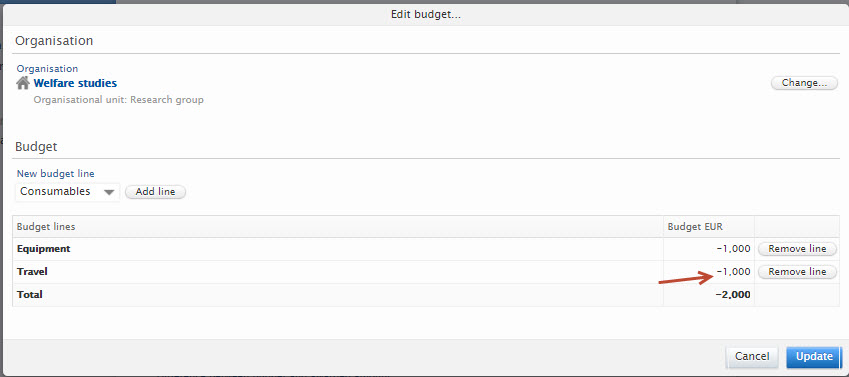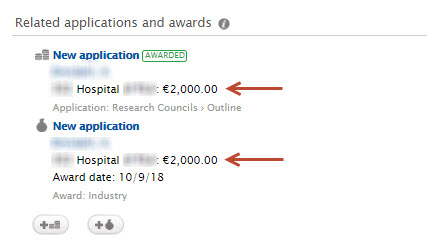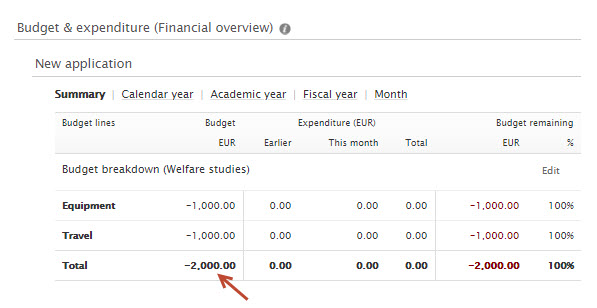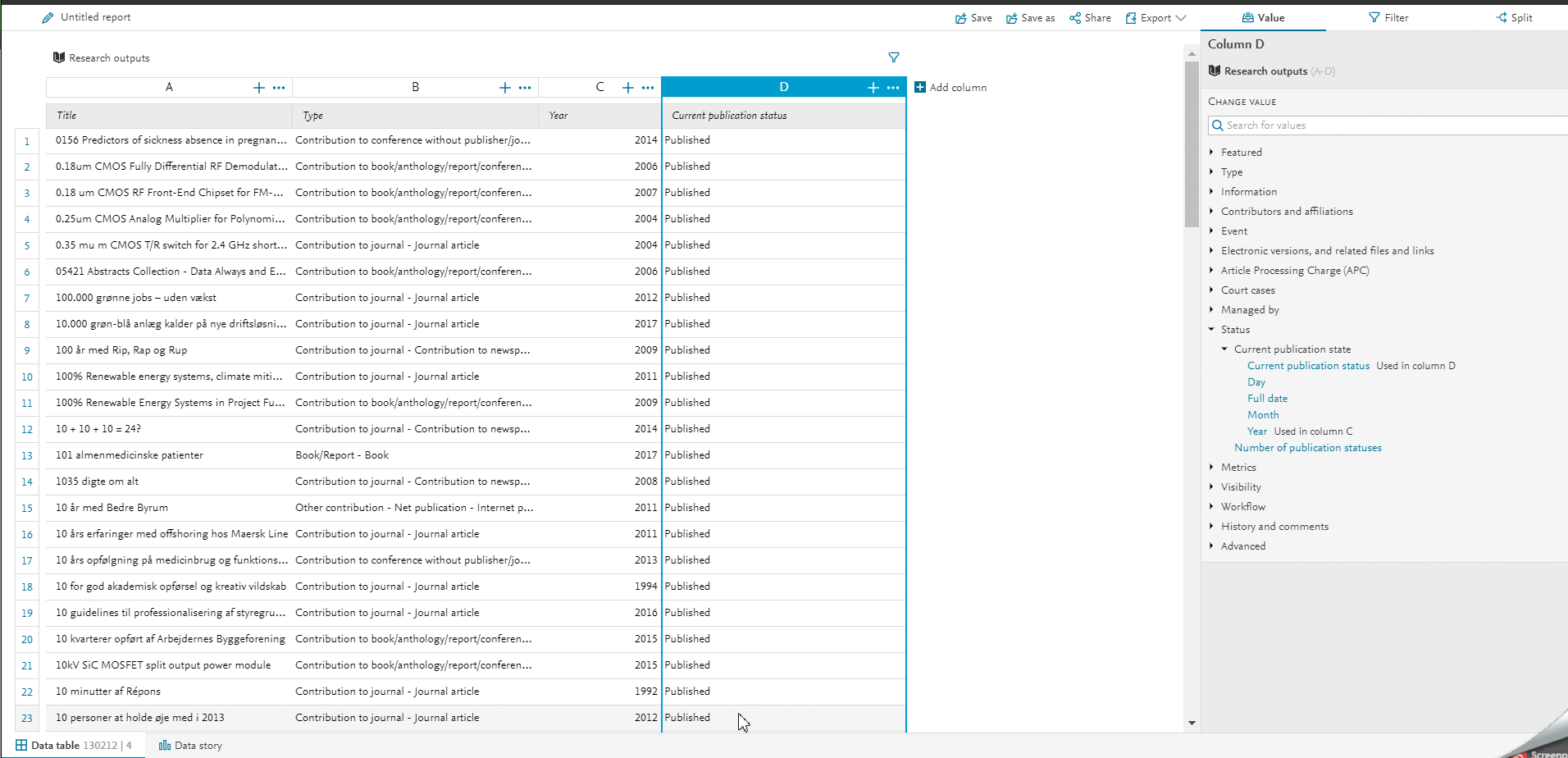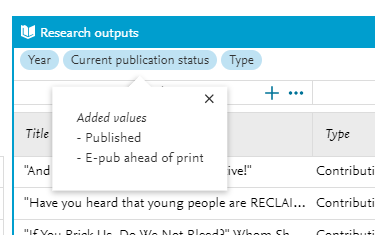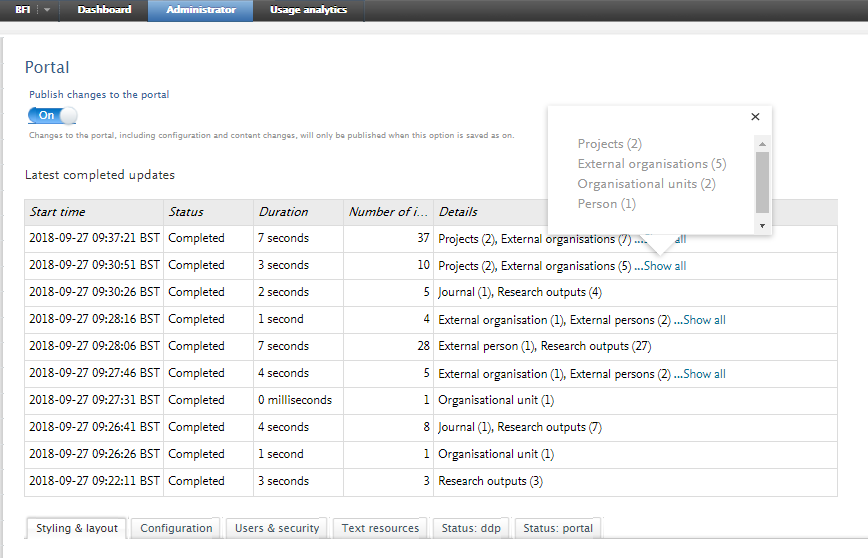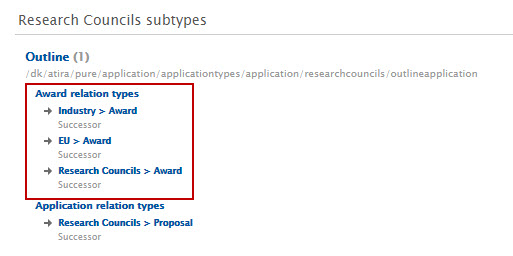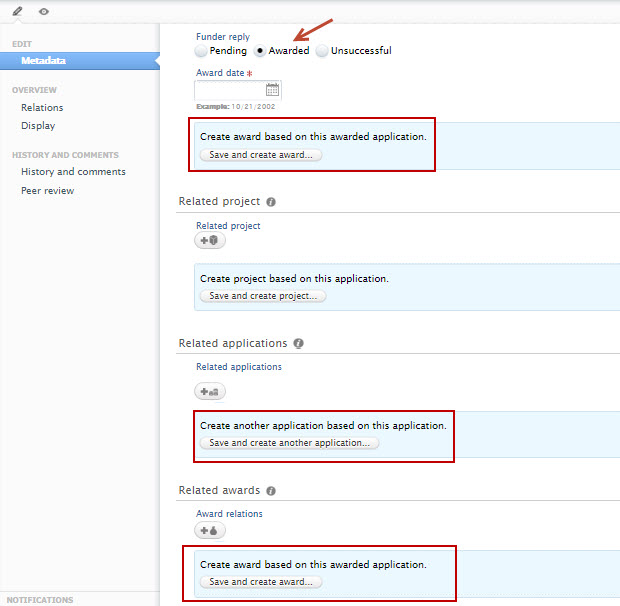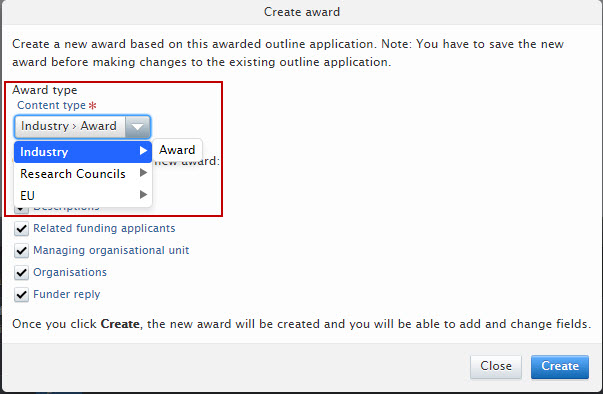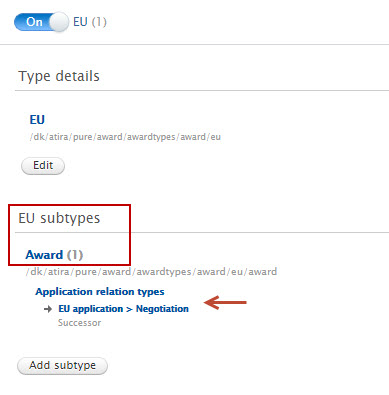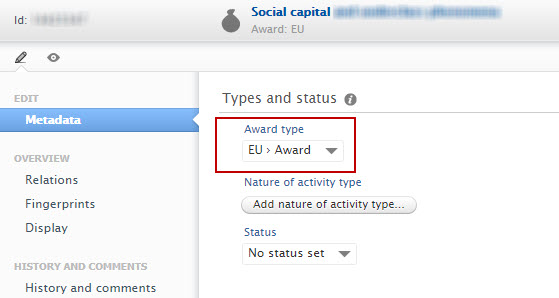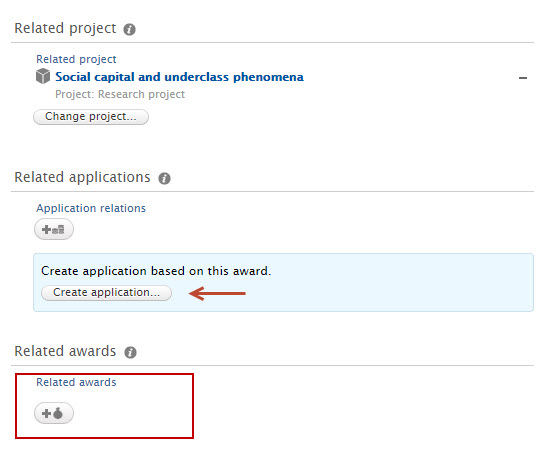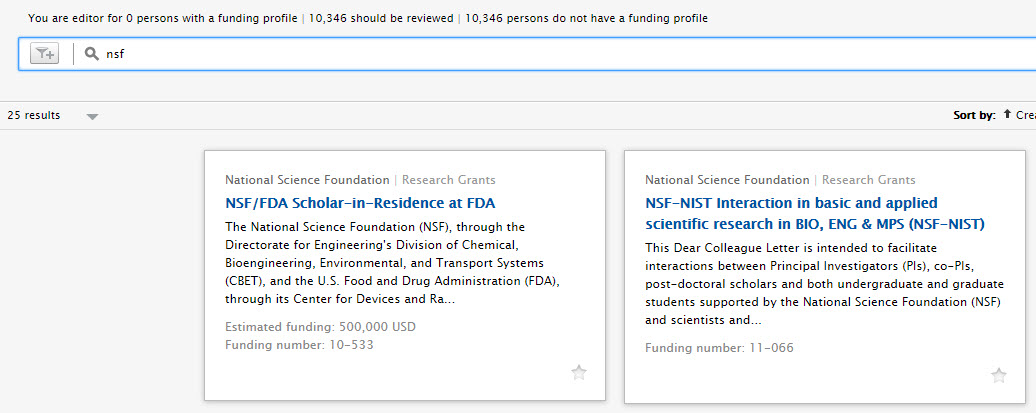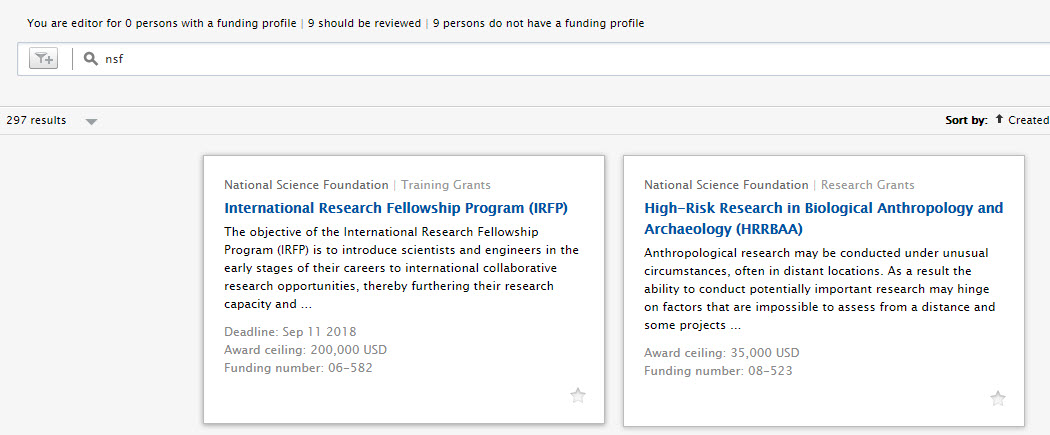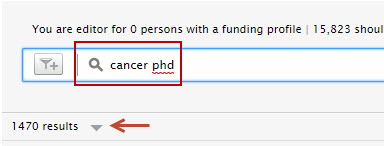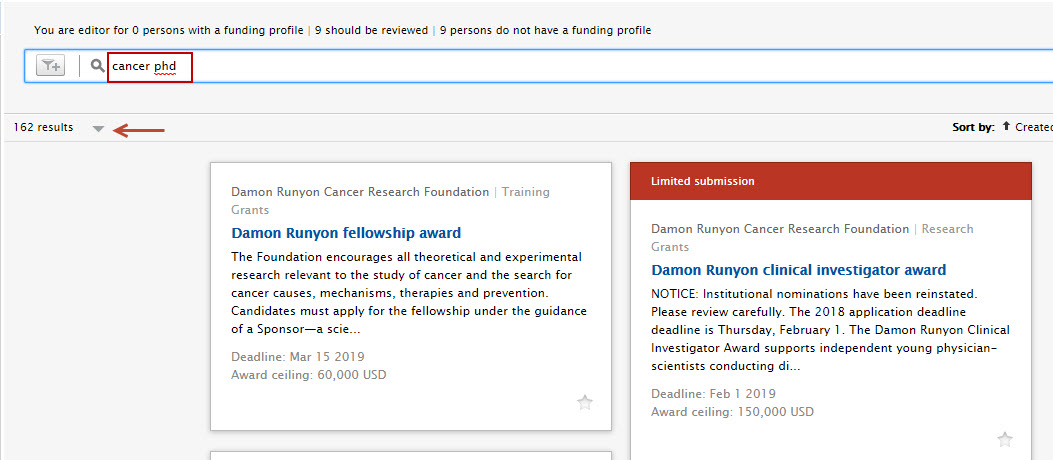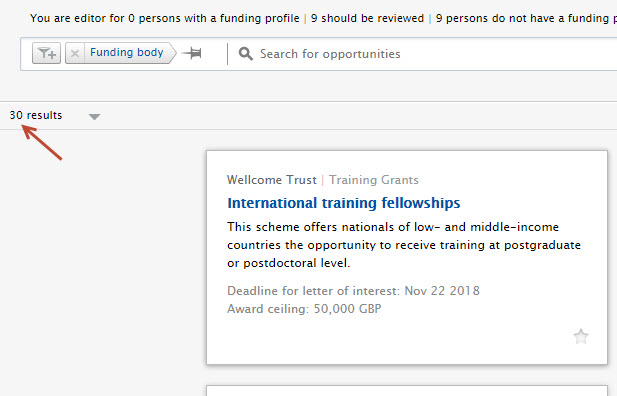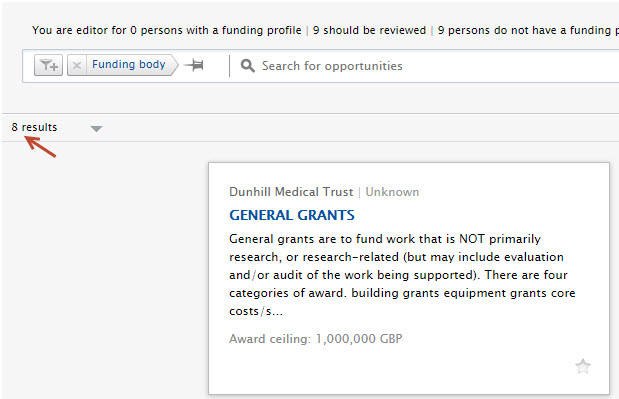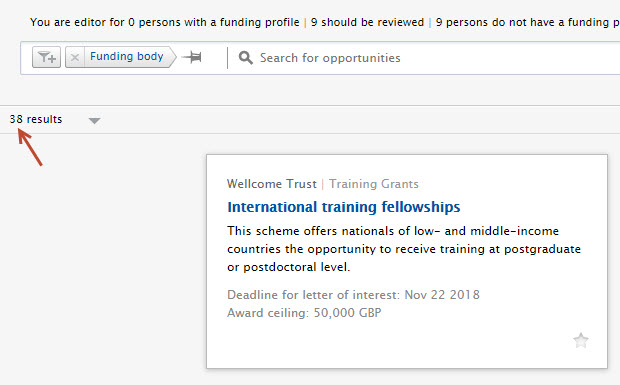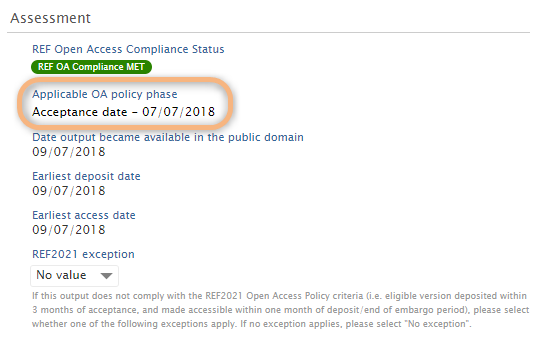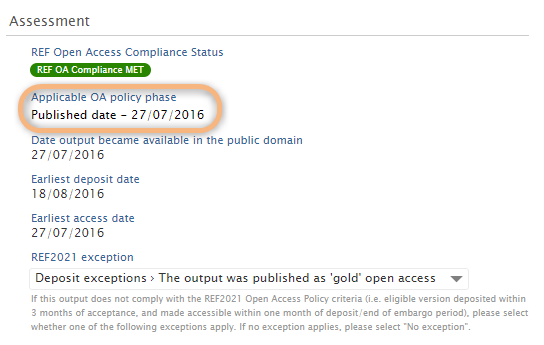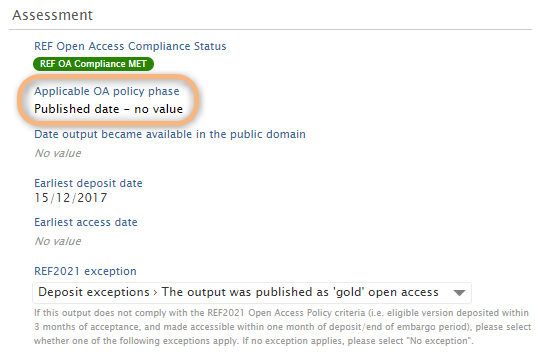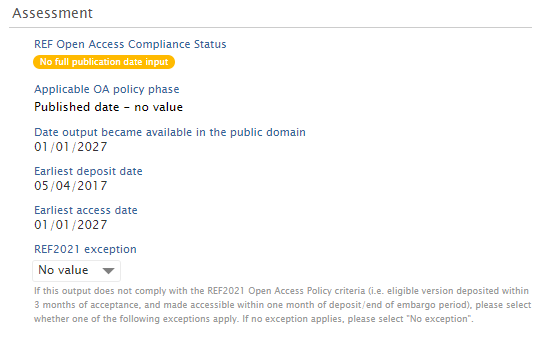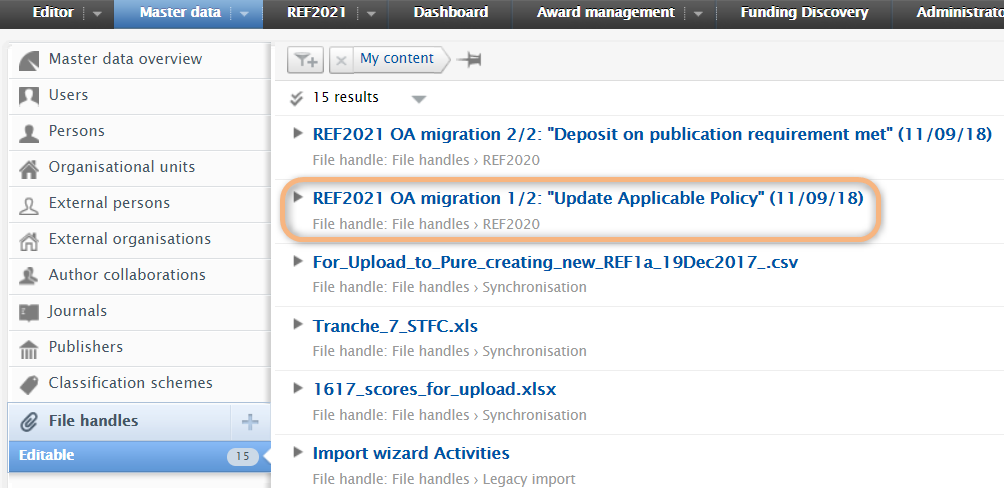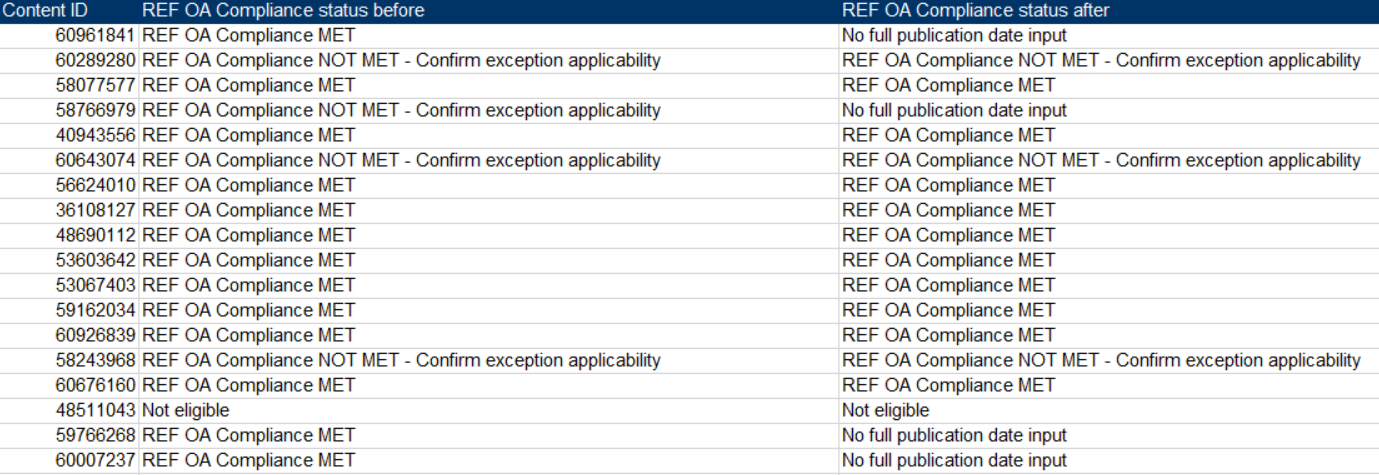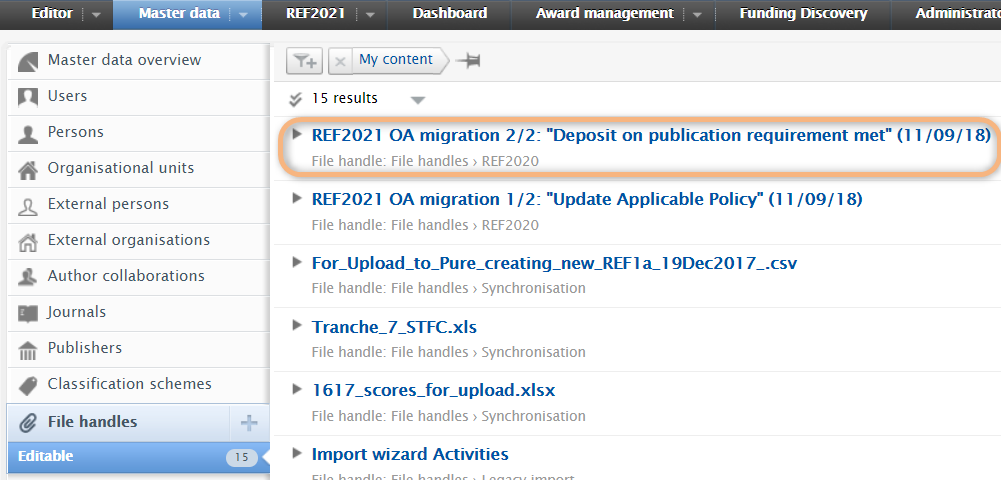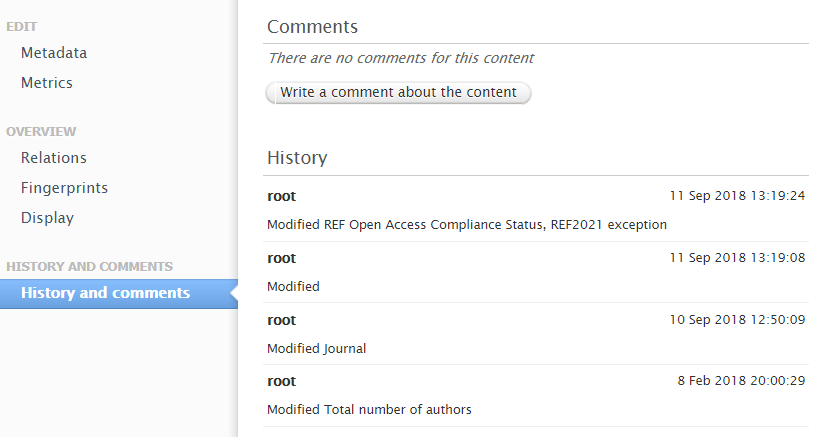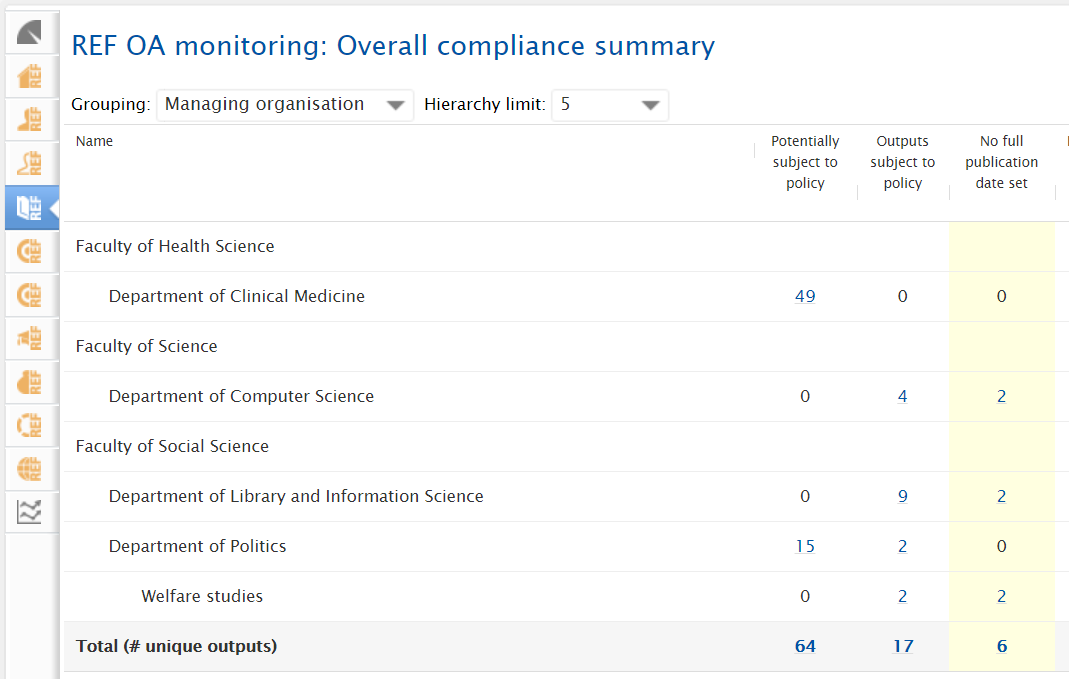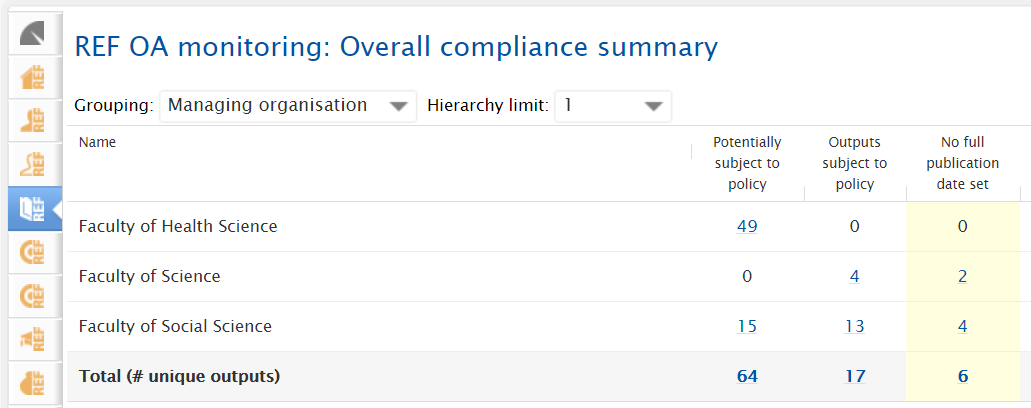How Can We Help?
5.13.05.13.0
We are pleased to announce that version 5.13.0 (4.32.0) of Pure is now released
Always read through the details of the release - including the Upgrade Notes -before installing or upgrading to a new version of Pure
Release date: 10 October 2018
Hosted customers:
- Staging environments (including hosted Pure Portal) will be updated 10 October 2018 (APAC + Europe) and 11 October 2018 (North/South America)
- Production environments (including hosted Pure Portal) will be updated 24 October 2018 (APAC + Europe) and 25 October 2018 (North/South America)
Download the 5.13 Release Notes
last updated 10 October 2018
PARTICULAR ITEMS TO NOTE WITH THIS RELEASE
Old Pure web service API will be deprecated in 5.13.0 (October 2018) and removed with 5.14.0 (February 2019)
We announced in the Pure 5.9.0 Release notes (June 2017) our plans to remove the old web service API upon the Pure 5.13.0 release in October 2018. Over the past few months, we have received feedback that our users would like us to extend the overlap period of the old web service API. As such we will not be removing the old web service API with the release of Pure 5.13.0, but we will deprecate* it with the 5.13.0 release and remove it in the 5.14.0 release in February 2019.
*Deprecation means that we will no longer fix or improve the old web service API, but you can continue using it until its removal in 5.14.0.
We encourage everyone to make sure you have adapted your applications to use the new web service API. Details of the new web service API can be found here .
Please also be aware that the new web service API only supports the Unified Project Model. Content in the old Project model will not be available on the new web service API. If you implemented Pure from 4.13 or later (this includes all of Pure 5), you are already are using the Unified Project Model. If you are in doubt, you can check the Administrator tab > Unified Project Model tab. If this tab with the Unified Project Model settings is available, you are using the Unified Project Model. Please contact the Pure Support team for assistance in migrating to the Unified Project Model.
Removal of the 5.9 web service API endpoint
Pure 5.13.0 is the first release where a new web service endpoint (the 5.9 API) will be removed. If you are currently using the 5.9 endpoint, you will need to update your queries to use one of the supported web service endpoints. For this 5.13.0 version these are:
- 5.10 API
- 5.11 API
- 5.12 API
- newly introduced 5.13 API
You can find more information about the web service delivery module in the 5.9.0 Release notes. We will continuously inform you about removed web service endpoints in the individual 5.9.0 Upgrade Notes of the release.
Faculty and Academic Activity Reporting (FAAR)
We recently discovered an issue with FAAR functionality such that, under certain conditions, when a batch download of FAAR reports was actioned, Parent organisations were removed from Organisational units in the database, leading to orphaned Organisational units in the hierarchy (if you synchronise your Organisational unit content, Parents would be re-instated upon the next synchronisation). This issue has been resolved in both 5.12.4 and 5.13.0, and a job to resolve the Organisational hierarchy issues caused is expected in the 5.13.0-1 release.
We have been in touch with all customers who have enabled FAAR with more detail on this issue and work being undertaken to fix the Organisational hierarchy issues caused. If you have not heard from us but think you have been affected, please contact the Pure Support team directly).
Espacenet: New API requires access credentials
Espacenet has released a new version of their API, which now requires the use of access credentials. All customers using Espacenet as an import source must upgrade their Pure to at least version 5.12.2. Further details are available from the 5.12.2 release notes
Funding Discovery
Customers using the Funding Discovery module are requested to upgrade their Java 1.8 version to version 1.8.0_162-b12 or newer. Older versions cause SSL errors (SSL handshake failure from the secure HTTPS connection made from Pure to the Pure funding service).
1. GDPR (General Data Protection Regulation)
In this release we have introduced some GDPR-related access changes to reporting in Pure, based on customer feedback:
- The Submitter of Research Output role no longer has access to the Reporting module. We have created a new organisational Reporter of Research Output role. To grant access to the Reporting module to Submitters of Research Output, you will need to assign them the new Reporter of Research Output role as well.
- Raw data spreadsheet layout in Reporting module: The ability to select the 'Raw data spreadsheet' layout in the Reporting module is now only available to the Administrator role. Access to any existing reports with this layout will be removed for all users other than Administrators.
- Reporting module: We have removed all scenarios where it was possible for non-Administrator users to report on Person Gender and Date of birth when reporting on other content.
2. Web accessibility
2.1. Improved reporting experience for keyboard and screen reader users
The Technology preview of the Reporting Module has been enhanced as part of our continued effort to ensure that the Pure backend is accessible to people with disabilities. This release includes several core navigation components and adds some contextual information for screen readers, bringing the module closer in compliance with the WCAG 2.1 and WAI-ARIA accessibility standards. The core accessibility improvements will roll out across the Pure backend as part of our general user interface refresh.
Click here for more details ..
-
Improved experience navigating the Data table with a screen reader
We have enhanced the Data table to allow tab focus on individual cells. Cell values and their context are now announced by screen readers and users can navigate between cells of different rows and columns using the arrow keys. -
Improved navigation and screen reader accessibility in the Data table Value and Filter panels
The Data table tool panels have been updated to improve accessibility for users who rely on keyboard navigation or screen readers. Screen readers are now able to correctly identify each tab and users can navigate between tabs using standard navigation keys.
Changing the type of value in an existing column has been enhanced with screen reader-friendly markup and navigation, enabling a keyboard user to expand and collapse categories and select values within categories or sub-categories.
The list of filter options in the filter tab has been made accessible via keyboard navigation using the same navigation as the value tab. -
Save and warning dialogs are now recognized as dialogs by screen readers
Dialogs such as the Save form and full screen warnings are now labeled as such and tab focus is kept within the dialog itself. Dialogs can be closed via the Escape key or by focusing the close icon in the upper right corner. - Drop Down components are now accessible for screen readers and announced as aria comboboxes
- Screen readers now read descriptions for input fields in range filters
- Popup menus, such as the export menu are now recognized by screen readers and implement standard-based navigation and focus handling.
3. Pure Core: Administration
3.1. Research outputs: Available updates from online sources
As part of our continuing focus on increasing automation to reduce the burden on our users with regard to data entry into Pure, this release introduces new functionality to update existing Pure Research Output records with new and potentially more complete metadata from available online sources. The feature searches online sources for updated information on existing Research Outputs in Pure and presents users with the updated data for consideration.
By default, this feature is ENABLED and updates are by default only presented to Administrators - except for PRS customers using the QABO 'Scopus Publication Update Job', where the feature is by default DISABLED. Further information for PRS customers is available below.
Editing records while updates and pending consideration
While updates from online sources are pending consideration, Research outputs can still be edited and saved in the normal way, but with some restrictions:
- For users not enabled to access the available updates from online sources (e.g. Personal users), all metadata fields in the Research output editor will continue to be editable while updates from online sources are pending consideration
- For users enabled to access available updates from online sources (e.g. Administrator), those metadata fields with updates pending consideration will not be editable in the editor. Should the user wish to modify fields with updates pending consideration, the user will first need to address all fields with available updates
3.1.1. Presentation of available updates from online sources
When updated metadata is found for existing Research Output records in Pure (as per the configuration and matching details provided below), Administrators are presented with a list of Outputs with available updates. For each Output, the Administrator can then review these updates and decide the appropriate action (accept, ignore, merge).
Click here for more details...
The list of Research outputs with available updates from online sources is accessible through the menu under Research outputs.
|
Alternatively, records with available updates can be filtered using the filter options in the Research outputs window. Also available is the ability to filter available updates by import source.
|
NOTE:
- If the only updates available are for the Keywords and Other links fields, the updates will not be presented to the user for consideration and the fields will not be updated. If updates are found for any other fields, the available updates will be presented to the user for consideration.
3.1.2. Acting upon available updates
To enable authorized users to consider the available updates from online sources, a new 'Available updates from online sources' window of the Research output editor has been introduced, within which the user can choose to accept, ignore, or merge each available update.
Click here for more details ..
Upon selecting an Output with available updates from online sources, the Research output editor opens to a new 'Available updates from online sources' window of the Research output editor.
Differences in metadata fields between the existing Pure Research output record and the import source(s) fields are highlighted in yellow.
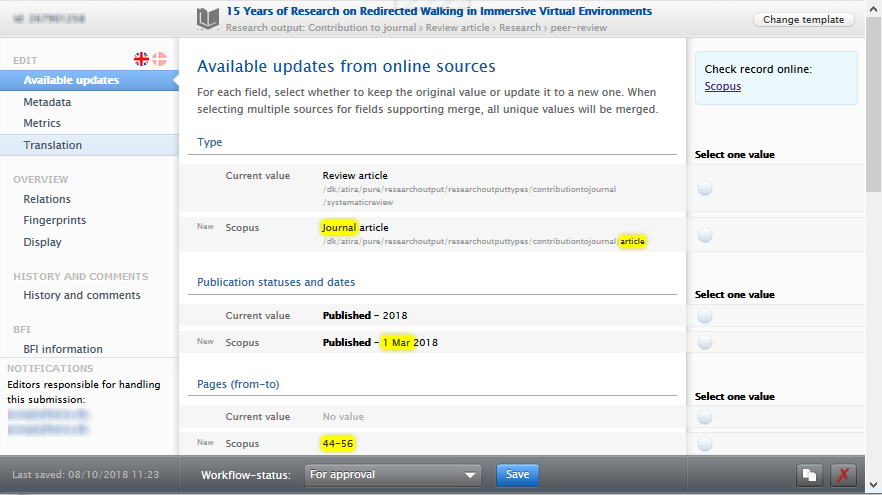
- For fields in which the Pure Research output record is null or blank, the value from the import source(s) is pre-selected.
- Users can select from each of the options presented for each metadata field.
- Once selected, the chosen value is highlighted and non-selected values are crossed-out.
- For some metadata fields, the option to merge values is available.
- Updates relating to the Journal field are not available for selection, even if there are differences between the Pure record and the import source(s). This is to ensure that such a fundamental change can only be implemented by directly editing the affiliated Journal in the Research output record itself, and to ensure that master Journal records are not unexpectedly altered.
Note: To edit metadata fields that do not have available updates, simply click the Metadata menu tab and all normal editing options are available.
Viewing current publisher or database version of record
If the user would like to view the most current version of the record, as presented by the publisher (via the DOI) or database, a link is provided at the top of the window.
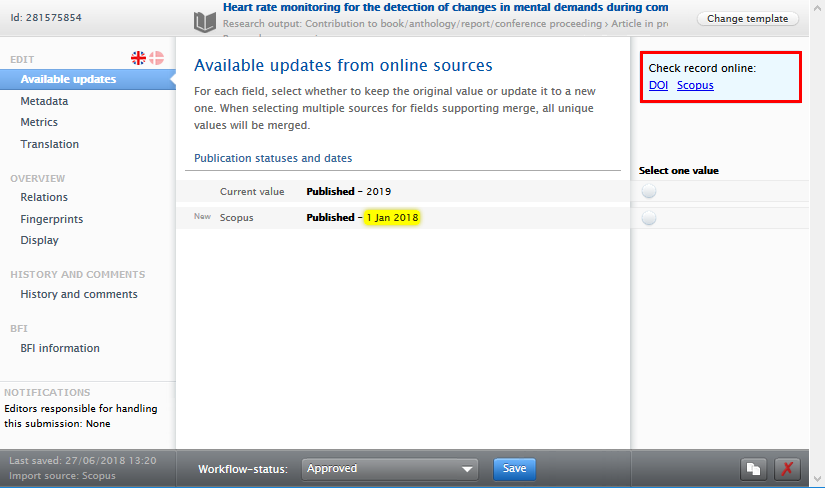
Saving updated records
Once one metadata field has been updated, either by selecting of merging new data, the user must address all metadata fields presented in the Available updates from online sources window before being able to save the record. If the user does not address all fields, a message will prompt the user to address those fields where no choice was made.
Changes made to records that have been modified using this feature may be viewed in the History and comments window.
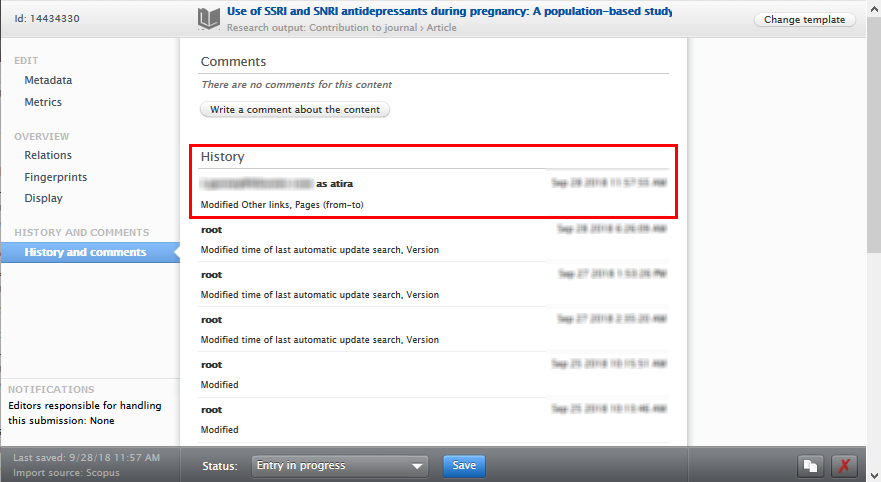
3.1.3. Search, matching, and comparison processes
The search for available updates is based on unique identifiers in the Pure Research Output record. These are:
- Scopus publication IDs
- DOIs
- ISBNs
- ORCID ID*
* For those Research outputs with an ORCID ID (i.e. imported from ORCID - see below), the ORCID ID will be used to check ORCID for any updated data.
Click here for more details...
Provided the Pure Research output is within the parameters determined in the configuration settings (see below), the job uses these IDs to check enabled import sources. Once the IDs have been matched to records in each import source, the metadata fields in the Pure Research output are compared against the available metadata fields in each import source.
- For fields in the Pure Research output that are null or blank, all available non-null data for those fields are retrieved.
- For fields in the Pure Research output record that have data, these fields are compared using a comprehensive string or number matching process. Wholly different values and minor differences in spelling or extra or missing characters trigger the fields to be presented to the user in the update candidates user interface.
Publication statuses and dates
For publication dates, care has been taken to only suggest updates that are more refined or wholly different. For example:
| Current published date | ||||
|---|---|---|---|---|
| 2 June 2018 | ||||
| Source A | Source B | Source C | Source D | |
| Data held by source | 2018 | 2017 | June 2018 | July 2018 |
| Outcome in Pure | Not suggested as an available update | Suggested as it is wholly different | Not suggested as it is less refined than the existing value | Suggested as it is wholly different |
The publication status of records is also considered when checking for updates. For example, where a record has a current publication status of 'ePub ahead of print', any other statuses (and dates) found from online import sources will be presented to the user. If a user selects an additional status and date, this status and date will be added to the record, alongside the existing status(es) and date(s). Existing publication states will not be overwritten.
Electronic versions (files, DOIs, and links)
This feature will not modify or remove existing files or links held on the record. Existing DOIs will be checked against the available online sources and modifications will be suggested in the same way as other metadata updates are presented. Where a DOI update is selected, default values for related fields are as follows:
- Document version = Final published version
- Public access to file = Unknown
- License to document = Not set
3.1.4. Supported sources
The 'Available updates from online sources' feature supports the receipt of updates from the following sources:
- Web of Science
- Web of Science (lite)
- Embase
- Mendeley
- PubMed
- Scopus
- ORCID
Only those sources that are enabled as import sources will be included in the update search.
The list of sources will increase over time and notifications of new additions will be included in the relevant release notes.
There is currently no means of ordering or prioritising updates from the different sources; improvements to this are expected in upcoming releases.
3.1.5. Configuring the Available updates from online sources feature
The 'Available updates from online sources' feature is delivered in Pure as a cron job, with configuration options such as:
- scheduling
- years to search
- authorised user roles
- exclusion of individual import sources.
The 'Available updates from online sources' feature can also be removed from the schedule.
Click here for more details ..
Enabling the 'Available updates from online sources' feature |
|---|
The 'Available updates from online sources' job can be added to the schedule by selecting it in the drop down list Administrator > Jobs > Cron Job scheduling >Select job from Create new job dropdown list. The job can be found under the 'Synchronisation with external systems' section. By default, this feature is ENABLED, except for PRS customers using the QABO 'Scopus Publication Update Job', where the feature is by default DISABLED. Further information for PRS customers is available below.
|
Configuration options |
|---|
The 'Available updates from online sources' job can be configured as follows: Starting year The job is configured to only consider Research outputs published in the specified year and later. The default value is the current year. For example, configuring the Starting year as 2017 will result in only Research outputs published in 2017 being considered. This configuration can be accessed via Administrator > Jobs > Cron Job scheduling > Available Updates from Online Sources Job > Edit configuration > Default configurations.
Access to results This feature is, by default, only available to Administrators. But additional user roles (Editors and Validators) can be given access via Administrator > Research outputs > Import configurations > Available Updates from Online Sources.
Enabling / Disabling individual online sources Online sources can be excluded from the feature by toggling on or off for the individual source at Administrator > Research outputs > Import configurations > Available Updates from Online Sources (by default, all enabled sources are included). Note that the list of online sources available is limited to those enabled as import sources (as per Administrator > Research outputs > Import sources).
Removing 'Available updates from online sources' job from schedule The job can be effectively disabled by removing it from the schedule. This is done by opening the job via Administrator > Jobs > Cron Job scheduling > Available Updates from Online Sources Job Once the job is open, Change Schedule > Remove from schedule.
|
3.1.6. PRS customers
Records updated by normal use of the Available updates from online sources feature will affect the functioning of jobs specific to PRS customers that rely on Scopus as an import source.
Click here for more details...
Due to differences in the default scheduling of, and the data state against which checks are made, the Available updates for online import sources (daily/live data) and the QABO Scopus Publication Update Job (weekly/snapshot data), and the aggressive matching processes of the Available updates for online import sources job, it is highly likely that the suggested updates from Available updates for online import sources may precede updates added by the QABO job. If any of the suggested metadata updates are accepted through normal use of the Available updates for online import sources job, the QABO job, as designed, will not look for updates on the specific metadata fields of the records that were updated or modified by the Available updates for online import sources job.
Recommendations:
- For PRS customers that rely on the QABO Scopus Publication Update Job to update records from Scopus, it is recommended not to enable the Available updates for online import sources job to avoid any inadvertent modifications.
- If PRS customers would still like to enable the job, it is recommended that Scopus is excluded from the list of import sources to be used by the Available updates for online import sources job (see section on Configuration options).
- If PRS customers would still like to enable the job, and have Scopus as an import source to be used by the Available updates for online import sources job, please contact the Pure Support team.
3.2. Research Outputs: Addition of Case notes
In response to a number of user requests, we have introduced 'Court cases' as an optional section in the Research output template, enabling the creation of Case notes. This feature will be of interest to those institutions with Law Schools or who undertake legal research, enabling the addition of court case decisions to Research outputs in a systematic manner, and enabling specific filtering and reporting on Case notes as Outputs.
Court case metadata can be added to the following Research output templates:
- Contribution to Journal
- Chapter in Book/Report/Conference proceeding
- Other contribution
These new Court case metadata fields are available in the new Reporting module
Click here for more details ..
Adding Court case details to Research outputs |
|---|
Once enabled (see details below), Court cases can be added in the Research output editor. Clicking 'Add court case' will open the Court case information window.
Multiple Court cases can be added to a Research output. The metadata that can be captured per Court case includes:
|
Display formats of Case notes |
|---|
A Case note (the combination of a Research output + Court case details) as research output is cited in full detail in the following formats:
The Case note will be shown in full detail in CVs so long as one of the citation formats above is selected as the Display format. |
Enabling Court case fields on Research output templates |
|---|
The ability to add Court cases to Research outputs is DISABLED by default. There is a two-step process for Administrators to enable Court cases. Enable Court cases in Pure Navigate to Administrator > System settings > Research output model > toggle on Enable court cases field
Enable Court cases on individual Research output templates Court case metadata can be added to the following Research output templates:
For each desired template, users can enable Court cases via Administrator > Research outputs then Templates and types > Edit [per RO type] > Edit subtype > toggle on Court cases
We strongly recommend that if an institution's users frequently create case notes, administrators should create a new 'Case notes' Output subtype, enabling Case notes to be easily identified by subtype and via filtering and reporting. To do so, go to Administrator > Research outputs thenTemplates and types > Edit [per RO type] > Add subtype > toggle on Court cases.
|
Court case IDs |
|---|
Course case ID types are managed via the 'Court case sources' classification scheme (/dk/atira/pure/courtcase/sources). By default the following ID types are available, and more can be added via the classification scheme:
|
3.3. Research Outputs: Ability to change the order of Publication categories
This release includes improved functionality to enable you to change the order of Publication categories in the Research output editor, which previously could be a very cumbersome exercise. This brings this functionality in line with other content types (e.g. Activities, Press/Media, Prizes) where the order of Categories was defined in the relevant classification scheme.
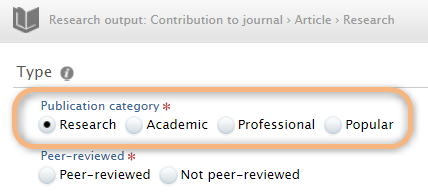
Click here for more details ...
It is now possible to change the order of Publication categories in the Research output editor via the Publication categories classification scheme (/dk/atira/pure/researchoutput/category). Selecting the preferred order here, using the up/down arrows, will immediately feed through to the Research output editor, for all templates and sub-types.
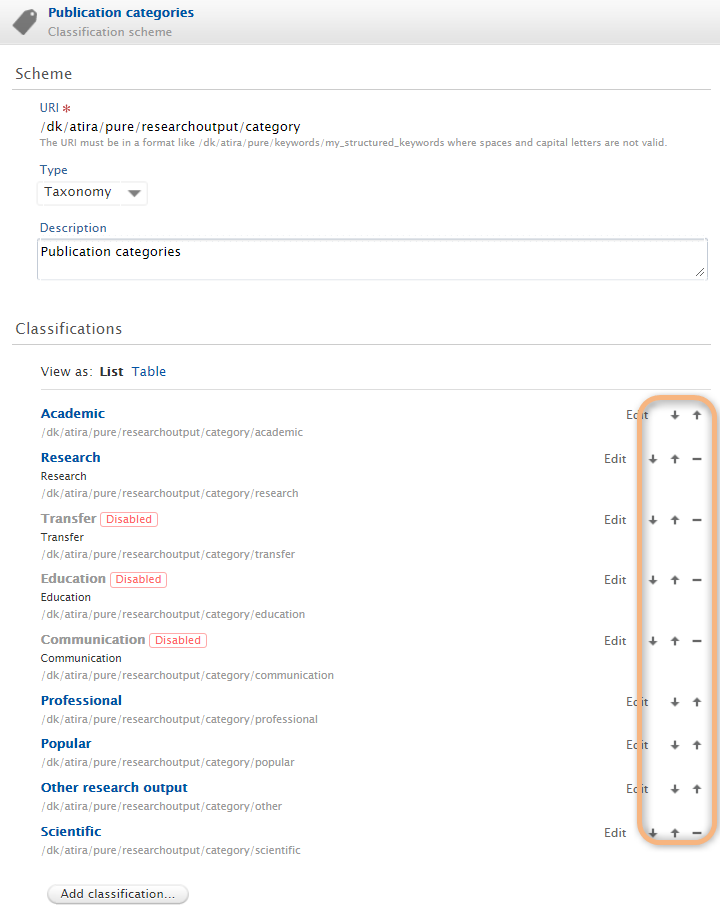
3.4. Unified Project Model: Updates to Cost codes on Applications and Awards
We have updated the behavior on the Cost code field introduced in the 5.12.0 release. We have added the ability to:
- Change between recording Cost codes on budget or funding level
- Filter on Cost codes
- Sync Cost codes into Awards and Applications
Click here for more details ..
| Change between recording Cost codes on budget or funding level | ||||||||||
|---|---|---|---|---|---|---|---|---|---|---|
It is now possible to change between recording the Cost code on funding and budget level, even after content has already been created using either of the two levels. This setting is universal over the Pure instance. This functionality enables greater flexibility for handling organizational or funder changes, allowing Cost codes for existing records to remain where originally captured, with Cost codes for all new Awards and Applications captured at the updated level. To change the level, go to Administrator > Unified Project Model > Module configuration > Configure funding on Applications and Awards
Existing Awards and Applications The new level is only for use on NEW Awards and Applications. Cost codes on existing Awards and Applications remain on the level on which they were originally created, displaying the recorded Cost code on the previous settings as read-only. In the example given above, where the administrator has changed the level from "Enabled on fundings" to "Enabled on budgets" the following effect is observed in an Application:
| ||||||||||
Filtering on Cost codes | ||||||||
|---|---|---|---|---|---|---|---|---|
It is now also possible to filter Applications and Awards on Cost code.
|
| Cost code visible in Tabular view | ||||
|---|---|---|---|---|
Add the Cost code field to the tabular view as below, and drag the column to create the appropriate ordering of columns.
The cost code is then displayed in the column for relevant Applications and Awards. Where the Cost code level has been changed and there are Cost codes in both fundings and budget level, this field displays a combination of these values, allowing you to filter on Cost codes regardless of which level these were created on.
Where there are multiple Cost codes, these are displayed below each other in the column. | ||||
Synchronize Cost codes into Awards and Applications |
|---|
| The Cost code field has been added to the XML format for Application and Award synchronizations, making it possible to include Cost codes from your external system. |
3.5. Unified Project Model: Update to integration with external budgeting tools
In the 5.12.0 release we introduced the facility to synchronize budgeting data into Applications from BlackDackel, an external costing system. In this release, we are building upon this functionality by:
- Making it possible to specify other synchronization sources for budgeting data.
- Upgrading the synchronization to make use of the synchronization improvements delivered in 5.12.0
Click here for more details ..
There are two ways of setting up the syncronization with an external costing system:
- Synchronization with manual input of external costing project codes
- Synchronization of fixed fields without external costing project codes
Synchronization with manual input of external costing project codes |
|---|
Set up the synchronization job by enabling the integration at Administrator > Applications > External costing configuration.
On saving the configuration, the synchronization job is automatically set up and run. To access the job log go to Administrator > Jobs > Job log > externalCostingSynchronisationCronJob.
Once the synchronization with the external costing system is enabled, a 'External costing system ID' field is added to each Application, in which the user is able to link the application in Pure to the relevant budgeting item or project in the external system (this is non-mandatory).
After the External costing system ID has been added and the Application has been saved, the Application is now included the regular synchronization of budgets into Applications and a message is displayed in the Application to inform the user:
Notifications are sent to Applicants, Editors, and Administrator of Applications when a synchronization has occurred on a specific Application. |
Synchronization of fixed fields without external costing project codes |
|---|
It is also possible to create the link between the Application in Pure and the project in the external costing system by notifying the external system of relevant applications in Pure. To enable this type of synchronization you must enter a Notification URL when setting up the synchronization at Administrator > Applications > External costing configuration.
Once the configuration is saved, Applications will display a 'Link this application with External costing system' checkbox in the Fundings section:
Checking the box and saving the Application sends a notification of the Application to the external costing system.
Fields that will be synchronized on saving the Application are:
If there are any problems in the synchronization settings the Application will not save, and an error message will be displayed. To save the Application in the meantime, uncheck the 'Link this application with External costing system' box.
|
- When synchronization with an external costing system has been enabled:
- the Fundings section of the Application is no longer mandatory, to allow for that data to be added via the synchronization after the Application has been created in Pure
- it remains possible to add Fundings manually in Pure - these can just be added to the Application along with the synchronized budgets
- When synchronizing budgets into Pure ensure that the:
- Base currency is set to the same currency in both the external system as in Pure
- Budgeting is using the same level of granularity with regard to tracking over years. For example, if the budget in Pure is set to allow tracking of budget annually, and not just as a total value, and the external system is reporting a total value, this will not be synchronized into Pure, as Pure is expecting annual amounts.
3.6. Unified Project Model: Description fields for Applications, Awards, and Projects now offer same formatting options
In this release, we have introduced formatting options for the Description field for Applications and Awards, bringing these editors in line with the Project editor. This was a particular issue when deriving an Application or an Award from a Project, when formatting would be lost.
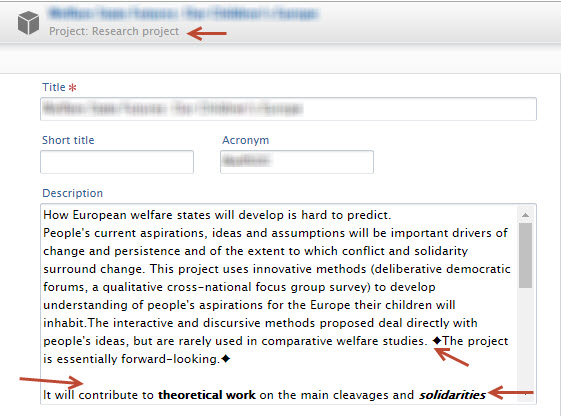 |
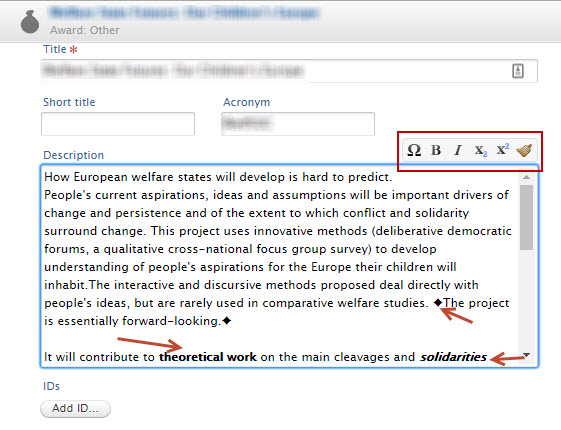 |
3.7. Unified Project Model: Separate classification scheme for Document types on Awards
When adding documents to an Award, the Document Type field defaulted to 'Other', and the classification was not unique to the Awards content type and therefore included a number of irrelevant types. In this release, we have introduced a new hierarchical Document type classification for Awards called Award Management: Award Document types. The default values are:
- Award
- Agreement
- Finance
Previously |
5.13.0 |
|---|---|
|
|
3.8. Unified Project Model: Submitter of applications
We have made it possible for the Submitter of applications to also be able to create new Applications.
To enable this functionality, go to Administrator > Unified Project Model > Module configuration > Configure which roles are allowed to create content and select the new option "Administrators, editors and submitters".
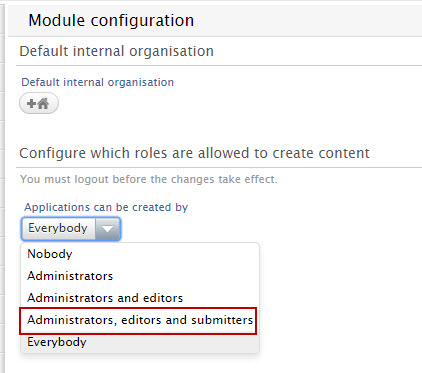
3.9. Unified Project Model: Negative budget values in Applications and Awards
We have made it possible to add negative budget values to Applications and Awards.
Click here for more details ...
| Application | |
|---|---|
Add budget line with negative value
|
Budget overview
Note: The Applied for amount subtracting the negative budget value results in a "Difference between budget and applied amount". This is due to the negative amount included in the budget that implies that an amount is being added to the budget. |
| Award | |
|---|---|
Edit budget line with negative value
|
Overview of budget and expenditure
Note: The Awarded amount subtracting the negative budget value results in a "Difference between budget and awarded amount". This is due to the negative amount included in the budget that implies that an amount is being added alongside the awarded amount. |
| Project | |
|---|---|
Funding summary from Application and Award
Note: Only the applied for sum is displayed in this overview |
Overview of Budget and expenditure
|
4. Pure Core: 3rd party import sources
4.1. ORCID: New Research output import source
We are very pleased to announce the addition of ORCID as an import source for Research outputs in this release.
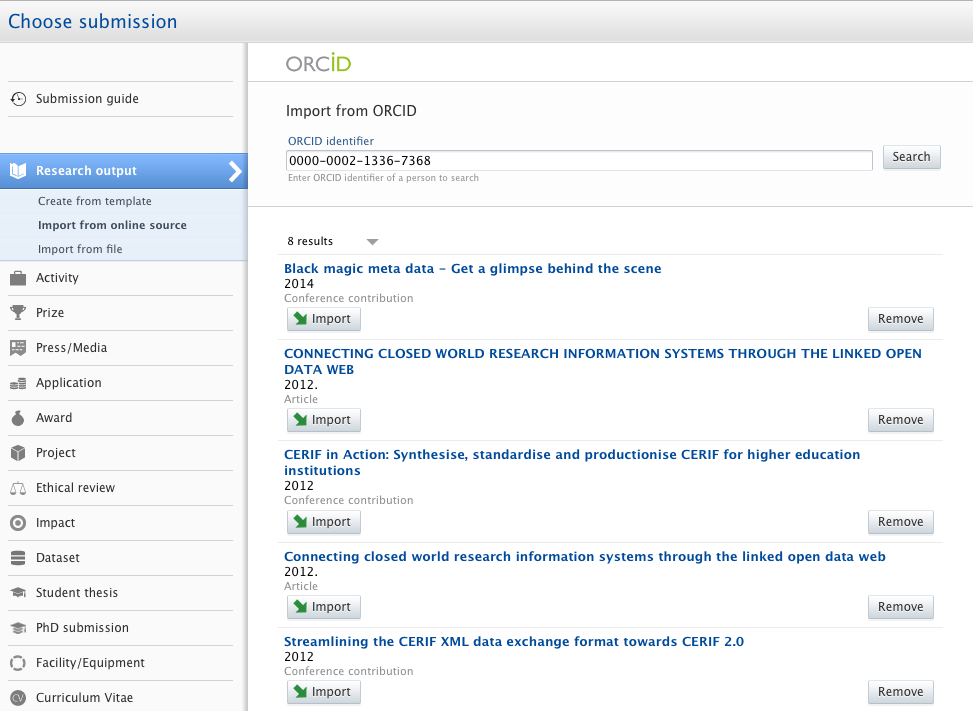
Click here for more details ..
To enable ORCID as an import source for Research outputs, go to Administrator > Research Output > Import sources > ORCID.

If you have already enabled the Export to ORCID functionality, we will pre-fill the configuration with your ORCID membership credentials and you only need to enable and save. You can of course also use different credentials, if you would like to (but there are no known benefits in Pure to doing so). The use of Membership API credentials or Public API credentials are supported. If you already have credentials, you can use those or follow the links provided to create new / additional credentials.
Pure will always read from ORCID's public API; all records marked in ORCID as viewable by everyone are available to import.
Note: It is only possible to search ORCID by the individual author's ORCID ID - this is the only search function supported by the ORCID API.
Interaction between import and export from/to ORCID
As Pure also provides functionality to export Research outputs to ORCID, in order to prevent the creation of duplicate records, Pure will not present as ORCID import candidates Research outputs that were originally exported from Pure. Given this, users may see fewer import candidates in Pure than there are total records available in ORCID.
In order to deliver this, we have improved the Export to ORCID functionality to include capturing the ORCID works ID on the Research output record in Pure. This enables Pure to identify records being exported to ORCID.
Accordingly, we strongly encourage you to export content to ORCID following upgrade to Pure 5.13.0, but before enabling import from ORCID. This will enable the capture of the ORCID works ID for each Output, preventing duplicates from being presented as import candidates.
To do this, run the 'Update ORCID With Pure Data Job' cron job, available at Administrator > Jobs:

By default this job is set to run daily, so you do not necessarily have to initiate the job manually, but can wait for its normal cycle to run.
If you don't export content to ORCID, you can disregard this section.
Notes:
- A mapping of Pure Research output types to ORCID works types can be viewed here.
- It is possible to enabled automated ORCID ID search, as per the automated search feature introduced in 5.12.0. This is DISABLED by default, but can be easily enabled (see ORCID import source screenshot above).
- We have re-organised the Export to ORCID configuration screen under Administrator > Integrations > ORCID.
4.3. SciVal Access: New user will be created when enabled
Enabling the SciVal Access integration will now create a user with the username 'SciVal_WS_Access'. This user will be used by SciVal to access the new web service API, if additional authentication is enabled. This user is locked if the Export to SciVal feature is disabled.
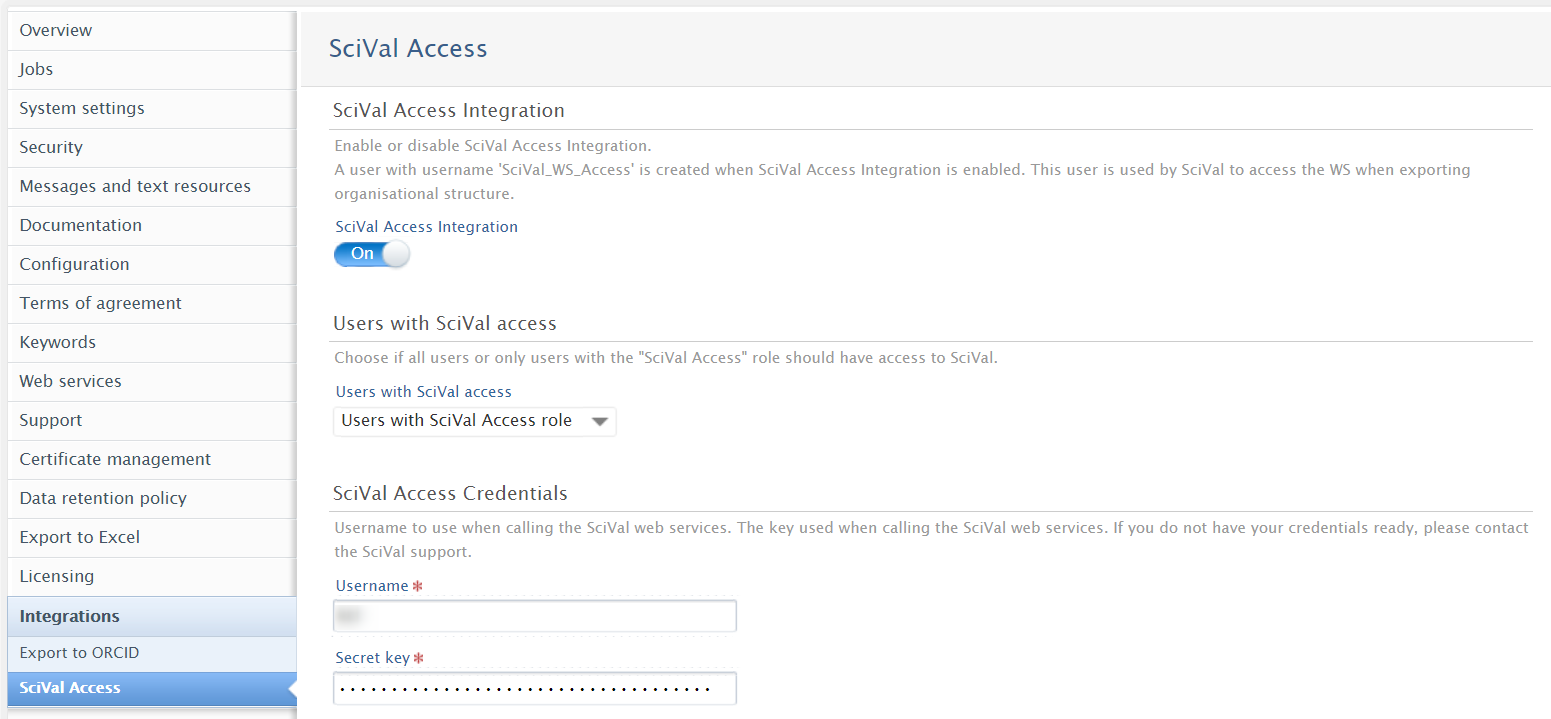
5. Pure Core: Web services
5.1. New Web Service: General Changes to POST calls
Major changes have been made to the POST body for all endpoints to ensure consistency between the XML and the JSON body structure. In addition, a POST body with the content type of application/xml is now validated against the web schema for the web service (can be found at https://_your_pure_server_/ws/api/513/xsd/schema1.xsd).
Click here for more details ..
Example of a field that has had a wrapper element added to ensure consistency, for example UUIDs
Before:
<?xml version="1.0"?>
<researchOutputsQuery><uuids>a961a9ec-016b-4bc2-92d6-ea3bdf0580b0</uuids><uuids>ba7fb9ab-cf89-4fb9-a4bf-9ebd5e97ec82</uuids><uuids>4999ea8b-6bf0-4758-8678-3cb047fa369e</uuids></researchOutputsQuery> |
After:
<?xml version="1.0"?>
<researchOutputsQuery><uuids><uuid>a961a9ec-016b-4bc2-92d6-ea3bdf0580b0</uuid><uuid>ba7fb9ab-cf89-4fb9-a4bf-9ebd5e97ec82</uuid><uuid>4999ea8b-6bf0-4758-8678-3cb047fa369e</uuid></uuids></researchOutputsQuery> |
Affected fields:
WSActivityQuery
typeUris
categoryUris
degreeOfRecognitionUris
workflowSteps
WSApplicationsQuery
typeUris
statusUris
workflowSteps
WSAuthorCollaborationsQuery
workflowSteps
WSAbstractAwardsQuery
typeUris
workflowSteps
WSClassificationSchemesQuery
containedClassificationUris
WSCoursesQuery
titles
types
formats
courseLevels
typeUris
workflowSteps
WSCurriculumVitaeQuery
typeUris
WSEducationsQuery
typeUris
WSEquipmentsQuery
typeUris
workflowSteps
WSEventsQuery
titles
typeUris
workflowSteps
WSFingerprintsQuery
contentIds
WSImpactsQuery
natureClassificationUris
statuses
typeUris
workflowSteps
WSAbstractJournalsQuery
titles
typeUris
issns
workflowSteps
WSAbstractQuery (changes for all post queries)
uuids
locales
fallbackLocales
renderings
fields
orderings
WSAbstractOrganisationQuery
organisationalUnitTypeUris
WSAbstractPersonsQuery
employmentTypeUris
personOrganisationAssociationTypes
WSPressMediaQuery
typeUris
workflowSteps
WSPrizesQuery
degreeOfRecognitionUris
WSAbstractUPMProjectsQuery
workflowSteps
WSAbstractPublishersQuery
names
countryUris
workflowSteps
WSAbstractResearchOutputsQuery
typeUris
publicationCategories
WSStudentThesesQuery
typeUris
5.2. New Web Service: Organisation Hierarchy added
A new call to the web service API /organisational-units/{id}/hierachy has been added. This call exposes all Organisational unit IDs from the given ID on in the hierarchy specified in Pure.
Click here for more details ..
There are two parameters relevant for this method:
<hierarchyDepth> Indicates how deep the query should look into the hierarchy. Default value is 8.
<hierarchyStrategy> Indicates what hierarchy to query after. The valid values are: (PARENTS,TAKEN_OVER). Default value is PARENTS.
- If the "PARENTS" hierarchy structure is selected, the output will resemble the view you can see in the hierarchy view of your Organisational units structure in Pure.

- If "TAKEN_OVER" is selected, the output will list all Organisational units taken over by the specified Organisational unit.
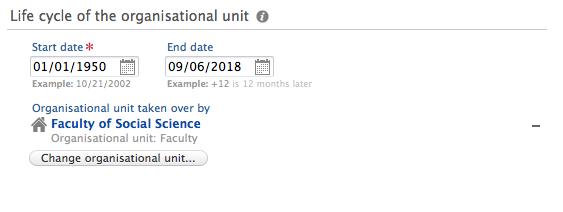
You can now also limit POST queries by your Organisational hierarchy. Where applicable, the POST queries have been expanded with the fields: <hierarchyDepth> and <hierarchyStrategy>.
5.3. New Web Service: Downloads Endpoint
A new endpoint (/downloads/) has been added that will allow you to query the web service API for download information (i.e information on downloaded files from Pure). This endpoint can be used to view a list of most downloaded Research outputs, Activities, etc.
Click here for more details ..
As usual POST & GET are supported for this method. Download counts can be retrieved per ID, to get a list of the supported content types please use /downloads-meta/family.
Example response:
<download xmlns:xsi="http://www.w3.org/2001/XMLSchema-instance" xsi:schemaLocation="http://localhost:8080/ws/api/513/xsd/schema1.xsd">
<pureId>3802906</pureId><contentRef uuid="db67d9fb-4c7a-4353-8141-93b486d760db"><link ref="content" href="http://localhost:8080/ws/api/513/research-outputs/db67d9fb-4c7a-4353-8141-93b486d760db?apiKey=83d2d604-cfa2-4a04-bd5c-d013b9c1c913"/>
<name>College 1</name><type pureId="25739" uri="/dk/atira/pure/researchoutput/researchoutputtypes/bookanthology/book">Book</type>
</contentRef><downloadCount>1</downloadCount></download> |
5.4. New Web Service - Award milestones
We have added a new endpoint to query for Award milestones. You will find the following new methods
- GET /award-milestones to retrieve the full list of award milestones
- POST /award-milestones to use additional filtering for advanced queries
- /GET award-milestones/{id} to retrieve a specific milestone by ID.
We have also added two methods to retrieve the available ordering and rendering options for Award milestones. Please find an example for the /GET award-milestones/{id} under details.
Click here for more details ..
Example of the of a query for an Award milestone with Pure ID 3801522:
<awardMilestone xmlns:xsi="http://www.w3.org/2001/XMLSchema-instance" uuid="1b7c31ff-0f14-4cff-b7b2-209e8a968bc2" pureId="3801522" xsi:schemaLocation="http://localhost:8080/ws/api/513/xsd/schema1.xsd">
<milestoneDeadline>2018-06-30</milestoneDeadline><completed>false</completed><award uuid="1a62fc4c-9e42-411a-977d-63fc09c26d83"><link ref="content" href="http://localhost:8080/ws/api/513/awards/1a62fc4c-9e42-411a-977d-63fc09c26d83?apiKey=cbba678c-7518-4123-a8a0-580ec2703b24"/>
<name locale="en_GB">2018 scholarship</name>
<type pureId="19452" uri="/dk/atira/pure/award/awardtypes/award/scholarship/award" locale="da_DK"/>
<type pureId="19452" uri="/dk/atira/pure/award/awardtypes/award/scholarship/award" locale="en_GB">Award</type>
</award><milestoneStates><milestoneState pureId="18688" uri="/dk/atira/pure/milestone/state/upcoming" locale="da_DK"/>
<milestoneState pureId="18688" uri="/dk/atira/pure/milestone/state/upcoming" locale="en_GB">Upcoming</milestoneState>
</milestoneStates><titles><title locale="en_GB">Scholarship start date</title></titles><descriptions><description locale="en_GB">Date that the scholarship begins.</description></descriptions><reminders><reminder pureId="3801525"><value>1</value><timeUnit>WEEK</timeUnit></reminder></reminders><academicRoles><academicRole pureId="5042" uri="/dk/atira/pure/award/roles/award/pi" locale="da_DK"/>
<academicRole pureId="5042" uri="/dk/atira/pure/award/roles/award/pi" locale="en_GB">PI</academicRole>
</academicRoles><milestoneType>ACADEMIC</milestoneType><contentInformation><createdBy>atira</createdBy><createdDate>2018-06-29T10:28:16.014+02:00</createdDate><modifiedBy>atira</modifiedBy><modifiedDate>2018-06-29T10:28:16.014+02:00</modifiedDate></contentInformation></awardMilestone> |
5.5. New Web Service - Highlighted content calls added
We have added the ability to retrieve Highlighted content from Pure's web service API. For each content type that supports Highlighted content, you can find a new call under /persons/{id}/_content_type_/highlighted:

The call will return content in the same format as for the other non-highlighted calls.
Note: This feature is currently only available to customers with the Pure Portal, as Highlighted Content is defined by the Portal feature introduced in Pure 5.10.0. In an upcoming release (currently planned for 5.14.0), we will expand this functionality to support Pure installations without the Pure Portal.
5.6. New Web Service - 'Content modified' added as filter option to endpoints
Previously, it was not possible to filter results based on when content was last modified. We have improved the filtering, so now you can find objects modified before a given date, after a given date, or within a period.
Click here for more details ..
Please find an example below. The dates specified as parameters are inclusive, so the resulting list will include milestones that have been modified in the period 1 January 1980 to 1 January 2525.
<?xml version="1.0"?><awardMilestoneQuery>...<modifiedAfter>1970-01-01T00:00:00.001Z</modifiedAfter><modifiedBefore>2525-01-01T00:00:00.001Z</modifiedBefore>....</awardMilestoneQuery> |
5.7. New Web Service - 'Academic' added as filter option to Persons endpoint
We have added a new filter that enables you to filter for Academic staff relations. This new filter exposes Persons with an Academic organizational affiliation.

Click here for more details ..
This filter accepts Boolean values as parameters:
<?xml version="1.0"?><personsQuery>...<academicStaff>true</academicStaff>...</personsQuery> |
5.8. New Web Service - Author roles filter for advanced queries
It is now possible to filter for author roles when querying for Research outputs in advanced queries (POST).
Click here for more details ..
When querying for Research outputs in a POST call, it is now possible to filter by the author role. You can use this new filter in combination with other filter options to form complex queries.
An example of the new filter in use:
<?xml version="1.0"?><researchOutputsQuery>...<authorRoles><authorRole>/dk/atira/pure/researchoutput/roles/memorandum/editor</authorRole></authorRoles>...</researchOutputsQuery> |
We have also added a new method to retrieve all the author roles available on your Pure installation and can be used as a filter value. They are displayed as classification URIs that can be used as a filter in POST/research-outputs.
5.9. New Web Service - Keyword filter for advanced queries
We have added the possibility to filter for Keywords in advanced queries (POST). This is available for all content types that support Keywords in Pure, and is available for both structured and free Keywords.
Click here for more details ..
An excerpt of a Research output query. The resulting list will only include Research outputs that have the structured Keyword '/dk/atira/pure/core/keywords/A/AC' and the free Keyword 'biofuel' assigned.
<?xml version="1.0"?><researchOutputsQuery>...<keywordUris><keywordUri>/dk/atira/pure/core/keywords/A/AC</keywordUri></keywordUris><freeKeywords><freeKeyword>biofuel</freeKeyword></freeKeywords>...</researchOutputsQuery> |
5.10. New Web Service - Keyword structure on WS results changed
The display of free and structured Keywords has been improved, applying to all results that display one or more Keyword groups.
Click here for more details ..
Keywords are now separated into containers, where structured and free Keywords are bundled together if they are related. Free Keywords are further split into their individual locales for easier assessment.
...<keywordGroups><keywordGroup logicalName="keywordContainers" pureId="546373">
<type uri="/dk/atira/pure/core/keywords" locale="da_DK"/>
<type uri="/dk/atira/pure/core/keywords" locale="en_GB">Keywords</type>
<keywordContainers><keywordContainer pureId="546374"><structuredKeyword uri="/dk/atira/pure/core/keywords/A/AC" disabled="false" pureId="1249">
<terms><term locale="en_GB">AC Collections. Series. Collected works</term></terms><descriptions><description locale="en_GB">AC Collections. Series. Collected works</description></descriptions></structuredKeyword><userDefined pureId="546375" locale="en_GB">
<freeKeyword>UKKey1</freeKeyword><freeKeyword>UKKey2</freeKeyword></userDefined><userDefined pureId="546376" locale="da_DK">
<freeKeyword>DKKey1</freeKeyword><freeKeyword>DKKey2</freeKeyword></userDefined></keywordContainer>...</keywordGroup></keywordGroups> |
5.11. New Web Service - Page information added for paging
The handling of paging and page size in web service responses has been improved. When paging is used, details are included in a new pageInformation section.
Click here for more details ..
Please find an example below, a query for 28 total objects with the result displaying the first ten (this is based on the size ten and offset zero).
<result xmlns:xsi="http://www.w3.org/2001/XMLSchema-instance" xsi:schemaLocation="http://localhost:8080/ws/api/513/xsd/schema1.xsd">
<count>28</count><navigationLink ref="next" href="..."/>
<pageInformation><offset>0</offset><size>10</size></pageInformation>...</result> |
5.12. New Web Service - Links to PDF files added to Curriculum Vitae endpoint
The Curriculum Vitae endpoint will now include links to PDF versions of CVs.
Click here for more details ..
An example of the link:
<pdfURLs></pdfURLs> |
5.13. New Web Service - Supported added for 'pretty' URL links
We have added support to also expose 'pretty' URLs (less complex and shorter URLs for Pure Portal content). These are available to Pure installations with a Pure Portal only and will only be exposed where available.
Click here for more details ..
A pretty URL for a person's profile page on the Pure Portal could look like
https://portal.com/persons/personsName(44055370-9c2e-11db-8ed6-000ea68e967b).html
While a prettyURL can look like this:
https://portal.com/persons/person
An example of the pretty URL structure:
<info>...<prettyUrls><prettyUrl>https://portal.com/persons/person</prettyUrl><prettyUrl>https://person.com</prettyUrl></prettyUrls>...</info> |
5.14. New Web Service - Support added for Court cases added to research output
We have added support to expose the new Court case metadata fields for Research outputs (see above).
Click here for more details ..
Available metadata for Court cases includes: Court name, Judgement date, Case identifier(s), and Court case titles.
An example of the XML structure is shown below:
<courtCases><courtCase pureId="[ID]"><court uuid="[court_external_ID]"><link ref="content" href="[link_text]"/>
<name>[Court name]</name><type pureId="[ID]" uri="/dk/atira/pure/ueoexternalorganisation/ueoexternalorganisationtypes/ueoexternalorganisation/court">Court</type>
</court><title>[Court case title]</title>
<judgementDate>[Judgement date]</judgementDate><ids><id pureId="[ID]" typeUri="/dk/atira/pure/courtcase/sources/ecliid" type="ECLI ID">[ECLI number]</id>
<id pureId="[ID]" typeUri="/dk/atira/pure/courtcase/sources/casenumber" type="Case number">[Case number]</id>
</ids></courtCase><courtCase >... if multiple court cases ...
</courtCase></courtCases> |
5.15. New Web Service - Improved ordering options
We have added a new 'orderBy' parameter to a number of our calls, allowing additional ways of ordering responses. If a sort order is selected in web service calls, the result is ordered ascending by default; with this new parameter, you can now explicitly select descending or ascending order.
Click here for more details ..
Examples of the new parameter in use (note, without API keys):
An example without the new parameter, this defaults to ascending:
localhost:8080/ws/api/513/datasets?order=dateAvailable
An example of the new orderBy parameter with descending order:
localhost:8080/ws/api/513/datasets?order=dateAvailable&orderBy=descending
An example of the new with parameter with ascending order explicitly set:
localhost:8080/ws/api/513/datasets?order=dateAvailable&orderBy=ascending
5.16. New Web Service - Change in Activities endpoint
We changed the XML structure for Activities that are associated to either an Organisational unit or an External organisation in order to correct an issue in the JSON output format, where associated content was missing. The tag for an associated Organisational unit has been renamed from <organisationalUnit> to <associatedOrganisationalUnit> and for associated External organisation from <externalOrganisation> to <associatedExternalOrganisation>.
5.17. New Web Service - Planned name change of order options on Research output for 5.14.0
We want to improve some of the naming of the available order strategies on the Research output endpoint as there are some cases where the current names are not sufficiently precise. We will inform you in the 5.14.0 release notes with exact details of the changes; you may need to make minor modifications to your existing queries.
6. Reporting
6.1. Technology preview of new Reporting module
Following the release of the technology preview of the new Reporting module in 5.9.056, and updates to this preview in subsequent releases (5.9.2, 5.9.3, 5.10.0, 5.10.1, 5.11.0, 5.11.1 and 5.12.0) we are continuing to develop the new Reporting module in order to deliver a comprehensive, flexible, and intuitive reporting tool that continues to meet users' evolving reporting needs. New features included in this release are:
- New content types
- Sharing
- Filtering improvements
6.1.1. Terminology
With this release, we have introduced a new term in the Reporting module: Workspace. A workspace incorporates both the Data table and its associated Data story (where one has been created). We've introduced this new concept of a 'workspace' in order to more accurately reflect the dynamic nature of what is being created - and to reflect the planned future direction of reporting in Pure.
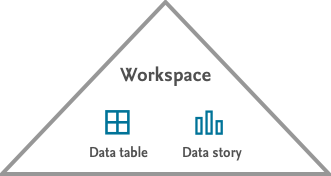
6.1.2. Additional content types
The following additional content types are now available in the new Reporting module, with associated filters and the ability to create data stories incorporating these data:
- Applications (Unified Project Model only)
- Awards (Unified Project Model only)
- Projects (Unified Project Model only)
- Milestones
- External organisations
- Activities
- Press/Media
- Facilities/Equipment
- Users
- Events
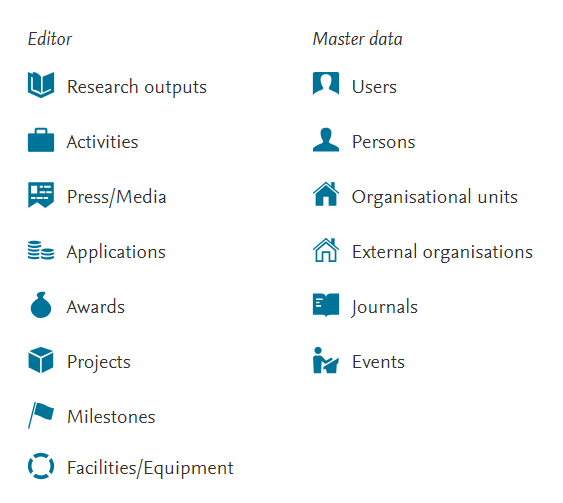
In upcoming releases, we will continue to expand the content types available in the new Reporting module, along with enhancing reporting capabilities (particularly filtering and aggregation strategies) for existing content types.
6.1.3. Sharing
This release includes the first phase of Sharing functionality, which enables users to share their workspaces with colleagues.
Click here for more details ..
In this first phase of Sharing functionality, we have delivered two distinct functions:
- Share a workspace with all users who have access to the workspace's content (Administrators only)
- Share a workspace with selected Pure users
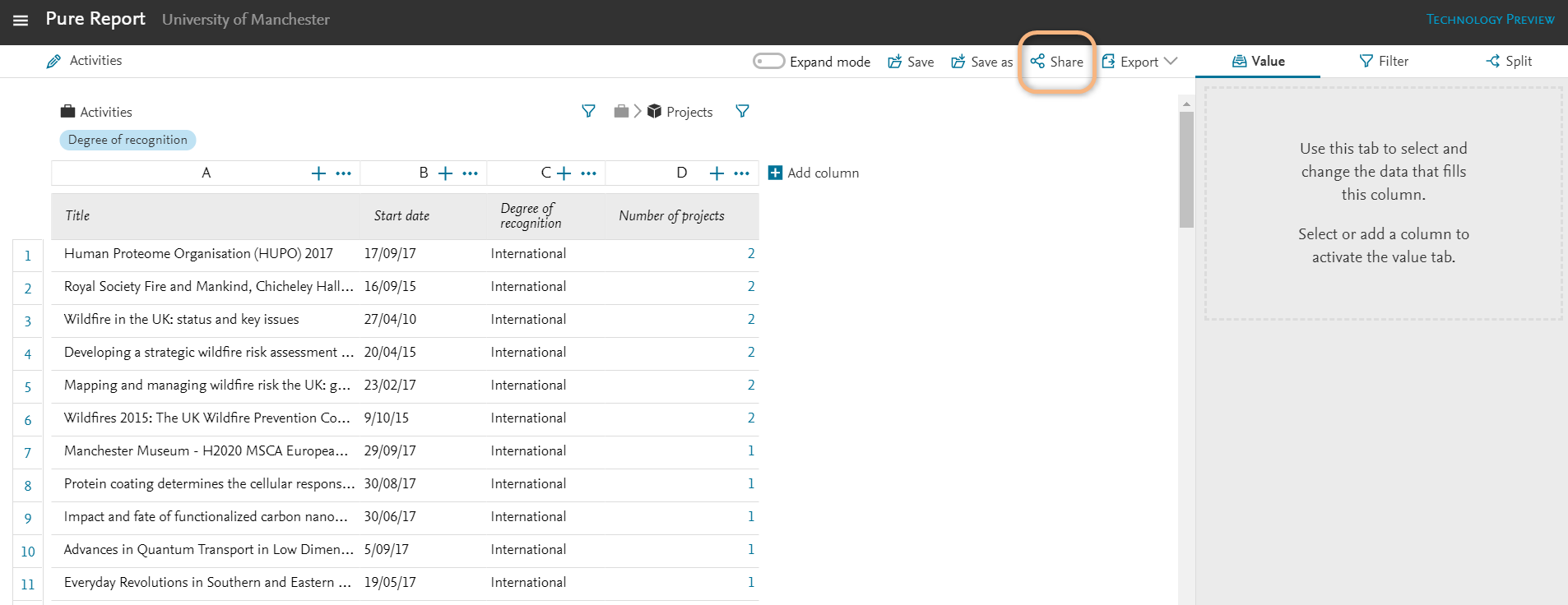 |
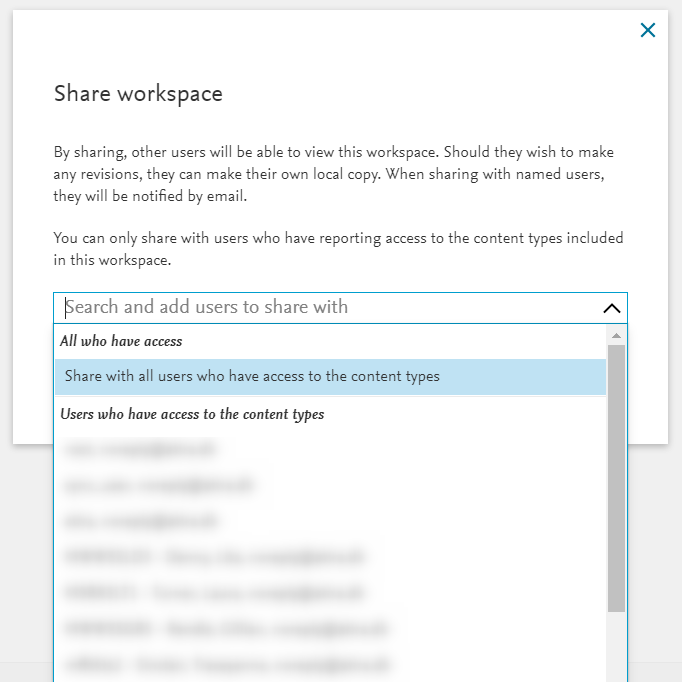 |
Sharing a workspace means that the recipient is able to view, but not edit the workspace. If a recipient would like to modify the workspace, they can create a copy and save a local version.
Shared workspaces are tagged as such in your list of saved workspaces.
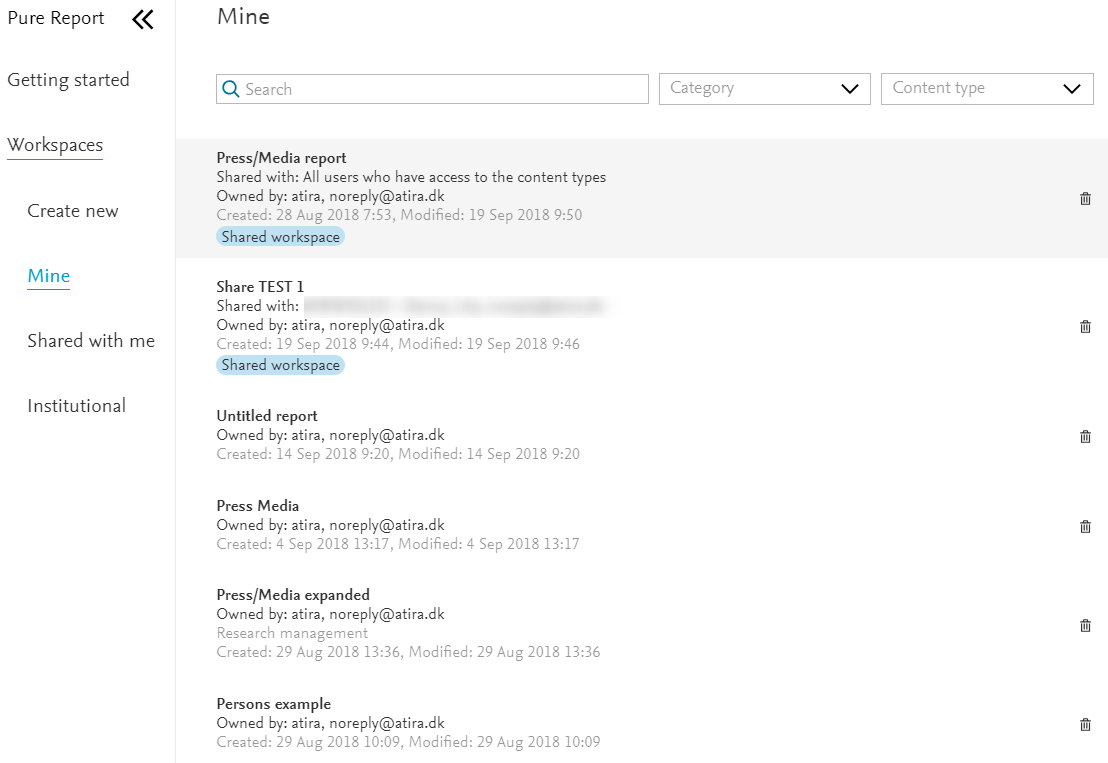
Navigation within the module has been updated to help users find shared workspaces. When an Administrator shares a workspace with all users, these are available to users under the 'Institutional' branch. When a user shares a workspace with named Pure users, these are available to the recipient under the 'Shared with me' branch.
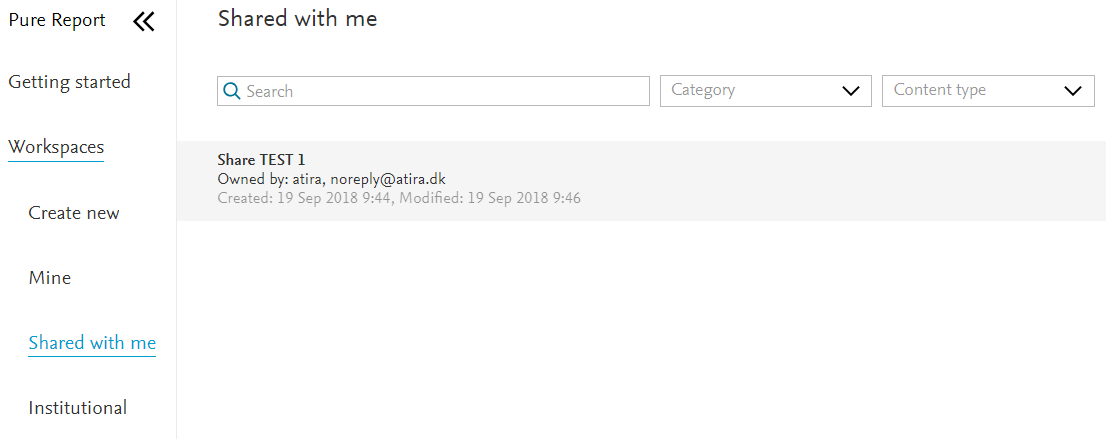
To 'un-share' a report, you can either simply delete it (as the creator) or remove the selected recipients, via the Share function.
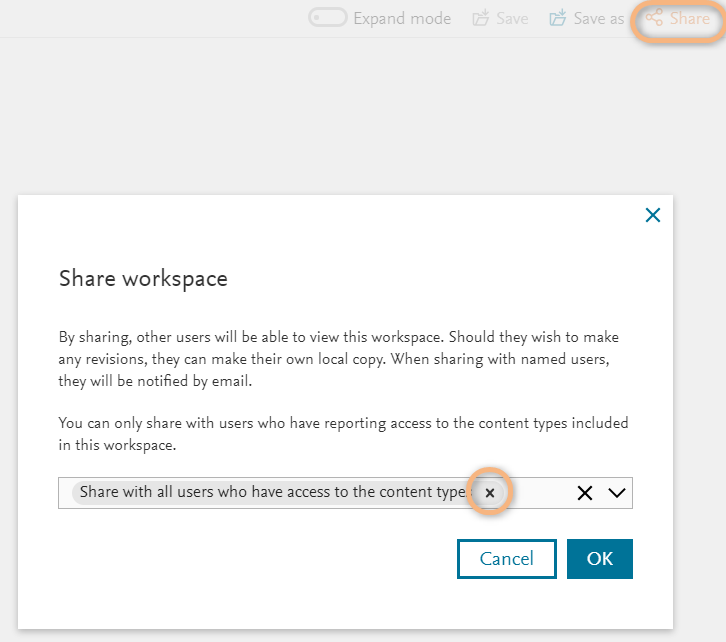
In upcoming releases, we plan to build on sharing functionality to support additional features such as sharing a static report outcome with selected individuals, and scheduling the generation of a report for dissemination to selected individuals.
6.1.4. Filtering
We have made some improvements to filtering functionality in this release:
- facility to save a group of filters and have them available for future use.
- easier to see what filters have been applied to a series.
Click here for more details ..
Preset filters |
|---|
|
We have introduced 'Saved filters' functionality that enables you to save commonly used filters and/or combinations of filters and have them available for future use.
|
Display improvements | ||
|---|---|---|
This release includes improvements to the filtering function that make it easier to see what filters have been applied to a series.
|
6.1.5. User roles
With the expansion of content types available in the new Reporting module, we have also expanded the roles with access to the new Reporting module.
Click here for more details ...
The Administrator role can always report on all content types.
Content type |
Roles |
||||
|---|---|---|---|---|---|
| Activity | activity-administrator |
||||
| Press/Media | clipping-administrator |
||||
| Facilities/Equipment | equipment-administrator |
||||
| Event | event-administrator |
||||
| Journal | journal-administrator |
||||
| Organisational unit | organisation-administrator |
||||
| Person | person-administrator |
||||
| Research output |
|
||||
| External organisation | ueoexternalorganisation-administrator |
||||
| Project |
|
||||
| Application |
|
||||
| Award |
|
||||
| Milestone | upm-award-administrator |
||||
| Country-specific content types | |||||
| UK: REF1 |
ref2020-staff-administrator (SuperEditor of REF1a/c) ref2020-unitofassessment-supereditor (SuperEditor of Unit of Assessment REF2021) ref2020-unitofassessment-editor (Editor of Unit of Assessment REF2021) ref2020-staff-editor (Editor of REF1a/c) ref2020-administrator (REF2021 Administrator) |
||||
| UK: REF2 |
ref2020-unitofassessment-reporter (REF2021 reporter) ref2020-administrator (REF2021 Administrator) |
||||
| UK: UoA |
ref2020-unitofassessment-editor (Editor of Unit of Assessment REF2021) ref2020-unitofassessment-supereditor (SuperEditor of Unit of Assessment REF2021) ref2020-administrator (REF2021 Administrator) |
||||
| Australia: ERA Researcher |
era-editor (Editor of ERA) era-fieldofresearch-editor (Editor of ERA Field of Research) era-fieldofresearch-supereditor (SuperEditor of ERA Field of Research) era-administrator (Administrator of ERA) |
||||
| Australia: ERA Portfolio |
era-editor (Editor of ERA) era-fieldofresearch-editor (Editor of ERA Field of Research) era-fieldofresearch-supereditor (SuperEditor of ERA Field of Research) era-administrator (Administrator of ERA) |
||||
| Australia: ERA Research output |
era-editor (Editor of ERA) era-fieldofresearch-editor (Editor of ERA Field of Research) era-fieldofresearch-supereditor (SuperEditor of ERA Field of Research) era-administrator (Administrator of ERA) |
||||
| Australia: ERA Field of Research |
era-fieldofresearch-editor (Editor of ERA Field of Research) era-fieldofresearch-supereditor (SuperEditor of ERA Field of Research) era-administrator (Administrator of ERA) |
||||
| Australia: ERA Research income |
era-editor (Editor of ERA) era-fieldofresearch-editor (Editor of ERA Field of Research) era-fieldofresearch-supereditor (SuperEditor of ERA Field of Research) era-administrator (Administrator of ERA) era-research-income-administrator (Administrator of ERA Research Income) |
||||
Sensitive fields
Sensitive fields are currently defined as follows:
Person |
External person |
|---|---|
|
|
6.1.6. Tips and Feedback functions
With this release we have removed the Tips function from the Reporting Technology Preview. In upcoming releases we plan to improve the onboarding experience by offering short videos demonstrating particular elements of functionality, to help users navigate through and use the new features.
We have also removed the Feedback function. This in no way means that we are not interested in your feedback! We would rather, however, at this stage in the development of the new Reporting module, to capture your feedback via JIRA, in line with feedback on all other Pure functionality. Please do continue to provide your feedback on the new Reporting module via JIRA.
6.1.7. Pure Academy classes
A Pure Academy: Reporting in Pure class was held in July covering all functionality in the new Reporting module so far, our development approach, and upcoming plans. A recording of the class is available here.
6.2. FAAR (Faculty and Academic Activity Reporting) enhancements
This release includes enhancements to Faculty and Academic Activity Reporting (FAAR), in response to customer feedback. These enhancements include:
- Introduction of Press/Media content
- Re-working of Courses to include affiliations based on Course occurrences, rather than by affiliations based on Course development
- Summary tables for each content type in the FAAR report
- Updated period filters for all content types to ensure that all 'active' content is included in the FAAR report for the selected period (not just those that started or ended in the selected period)
Click here for more details ..
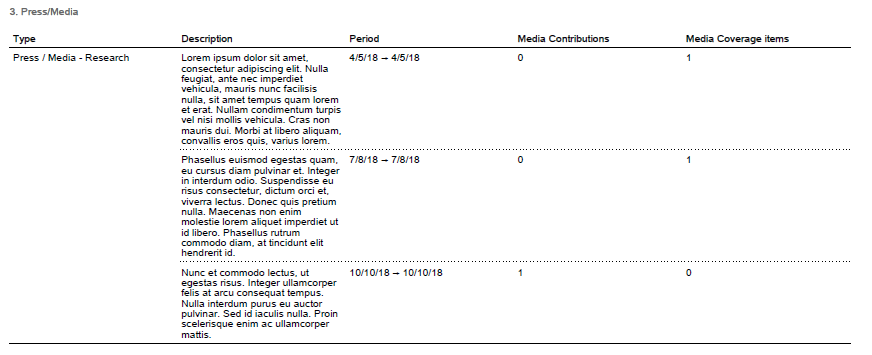 |
 |
7. Pure Portal
7.1. Portal update status overview
We regularly hear from our users that the Pure Portal configuration and content update process can be confusing and that it should be easier to identify what updates are in progress and when changes will go live. To this end, we have worked extensively this release on making this possible.
These changes affect only Pure Portal clients, and not Custom Portals or Standard/Generic Portals. The overview is visible to Administrator users only.
Click here for more details ..
Our Portal update process works as follows:
- Changes are collected into batches of updates, which are processed together.
- While one batch is being processed, all new changes that occur are collated into a second batch.
- This batch will continue to build up until the previous update is complete. Once the previous update is complete, the next batch is processed.
For Pure Portal customers, the new 'Update overview' can be accessed via Administrator > Pure Portal. The location will vary for Custom/Generic Portal customers - please let the Support Team know if you have any problems locating it.
The 'Update status overview' is broken down into two major sections.
- 'Update in progress'
- Update 'Log'
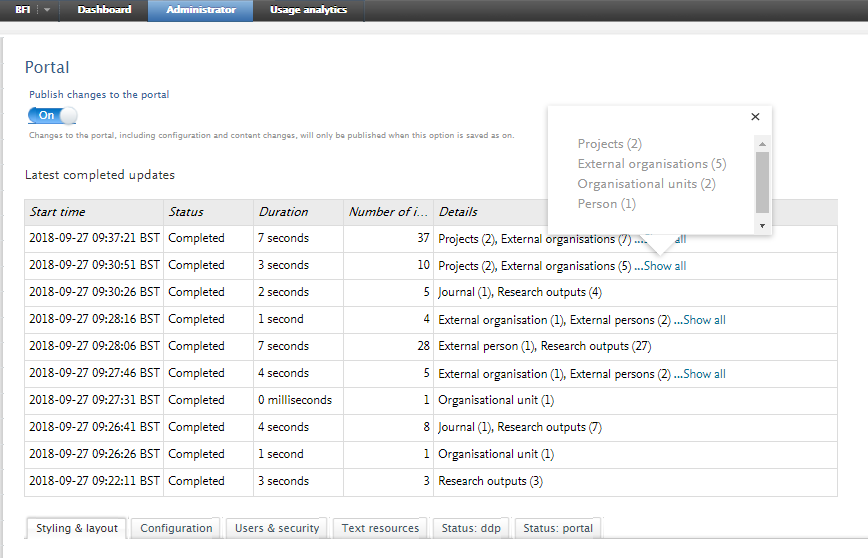
Update in progress |
|---|
|
This shows the current progress of the application of the changes in the current update batch. It displays the number of items in the batch out of the remaining total. The progress bar shows the percentage completion for the batch, based on estimates of how long each content type takes to update. |
Update log |
|---|
The update log shows an summary of the most recent Portal updates (max. 10). By checking the start time of the current update in progress, you can get an idea of whether your recent changes should be in that batch, or are in the queued batch. Any changes you make after the start time of the current update in progress begins will go into the queued batch. We are unable to give detailed information on the full estimated time before new changes are live on the Portal, but this should give you a rough idea. The timezone for start times is based on the timezone your system runs on. For locally hosted Pure systems, this will be your local timezone, that you have set for your Pure instance. For customers that we host in Amazon (the integrated version), the timezone is set to the your local timezone. For customers that we host fully in Amazon, the timezone will be set automatically to UTC and unfortunately cannot be changed. This is due to technical limitations currently and we apologise for the inconvenience. We may be able to resolve this at a later date. The 'Details' column shows a more precise breakdown of the items included in the individual batch. You can see the content types included, and the total number of items of each content type. If there are more items than we can show in the table row, you can click 'Show more' for an expanded overview:
|
7.2. Portal use of upgraded web service API
As first announced with our 5.9.0 release (June 2017), we are switching to an upgraded web service API for the Pure Portals as of this current release. As such, we have completed the necessary work to prepare Pure Portals for the switch. We expect the upgraded web service to result in overall greater stability and performance. We also now have clearer documentation, with a more consistent, versatile platform.
8. Awards Management
8.1. Milestones accessible throughout workflow
Once an Award has been created in Pure, and during the lifecycle of the Award (including after the content in the Award record has been validated), it is necessary to be able to edit Award milestones in order to manage and track the ongoing process of the Award. In order to facilitate this, we have made it possible for:
- Personal users to edit and create milestones on Awards in the Waiting for approval, Approved, and Validated workflow states.
- Editors of Awards to be able to edit and create milestones on Awards in the Validated workflow state.
Click here for more details ..
Before enabling this function, ensure that Award holders are enabled to modify Awards even if they have not created them. Go to Administrator > Unified Project Model > Module configuration > Configure which roles are allowed to create content. Enable the 'Modifiable by award holders' setting (it is not necessary for the 'Awards to be created by' setting to be set to 'Everybody').
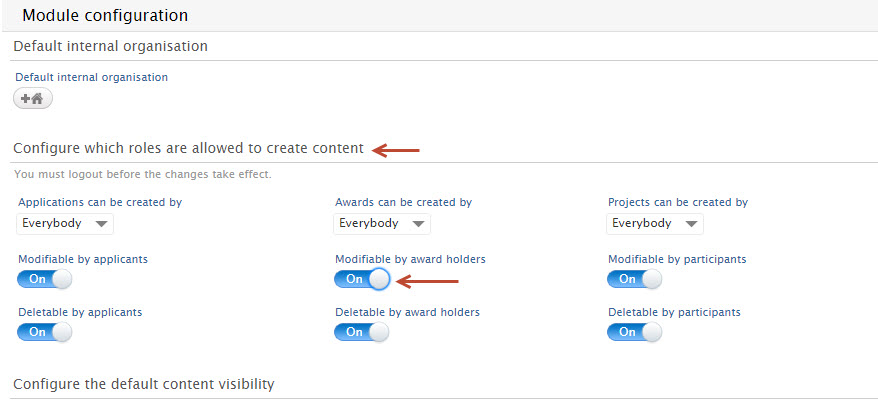
The screenshot below shows how Award milestones are active in the Personal user's read-only view:
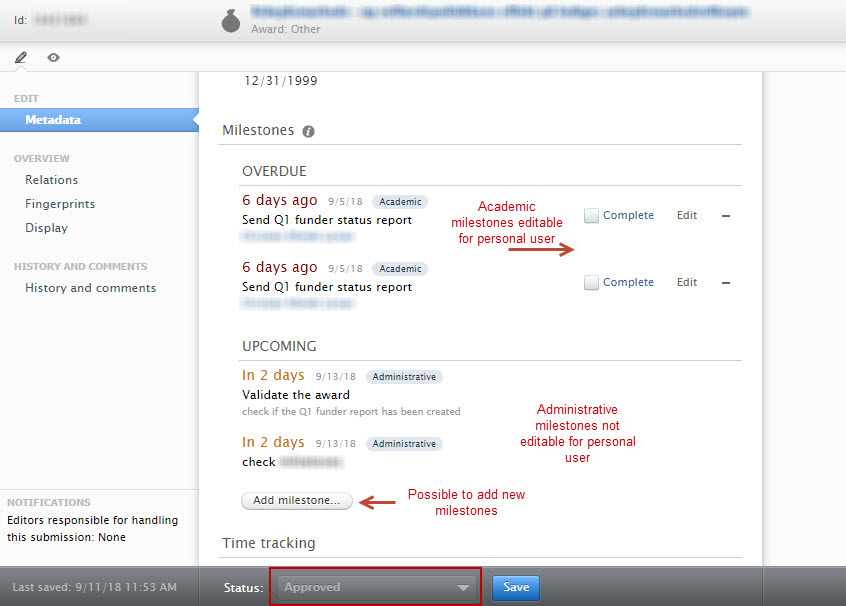
8.2. Update to management of Application, Award, and Project subtypes
In 5.12.0 we made it possible for administrators to manage application, Award, and Projects subtypes and the relations between them. Building on this functionality, in this 5.13.0 release Pure now enforces relations created by the Administrator on the subtype level when deriving an Application, Award, or Project. The selections available in the derived Application, Award, or Project are now limited to the allowed subtypes, based on the managed relations.
Click here for more details ..
A worked example |
|||
|---|---|---|---|
| The Administrator has created 3 new relations between the Outline Application subtype and the Industry, EU, and Research Council Award subtypes (identified as successors). |
|
||
| When the Application has been successful and marked as such, it is possible to create an Award or Application from the current Application (if a successor relation exists between the current Application subtype and another Application subtype). |
|
||
| If you choose to create an Award from the successful Application, you can select the appropriate content type of the Award from the list of Award subtypes that are identified as successors to the Outline Application subtype. |
|
||
|
Remember that the facility to create a new Award, Application, or Project from the current Application, Award, or Project is only displayed when there are 'successor' relationships identified. For example, here the Administrator has created one Application successor to the EU Award subtype. |
|
||
| As per the example given above, in an EU Award, you are only presented with an option to create a new Application from the Award. The user cannot create a new Award as there is no successor relationship created to another Award subtype. |
|
8.3. Tabular view now available for Personal users
Prior to this release, Personal users were only able to view Awards management content in the List or Matrix views. This release brings the ability for Personal users to view their data in Tabular view. To access Tabular view, users need to click on the Tabular view icon when viewing the list / matrix of Awards management content.

8.4. Applicants can request peer review when in read-only mode
With this new release, applicants who do not have the right to modify Applications can now request Peer review and add a document, while the remainder of the Application remains read-only.
Click here for more details ..
This applies to Personal users who are not able to modify Applications on which they are applicants (this is defined by the setting Administrator > Unified Project Model > Configure which roles are allowed to create content):
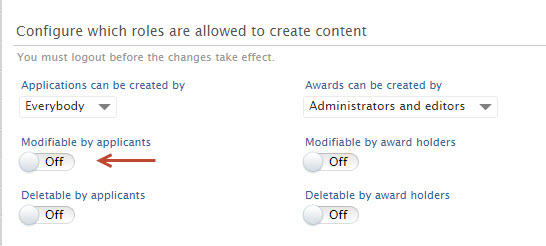
It is now possible to make Peer review functionality available to applicants who are unable to modify Applications. This is done via the setting Administrator > Award Management > Application peer review > Make peer review accessible, if applicants are not allowed to edit applications on which they are an applicant:

Steps for the applicant to request Peer review
When the applicant accesses an Application which they do not have the right to modify, it will be opened in read-only mode:
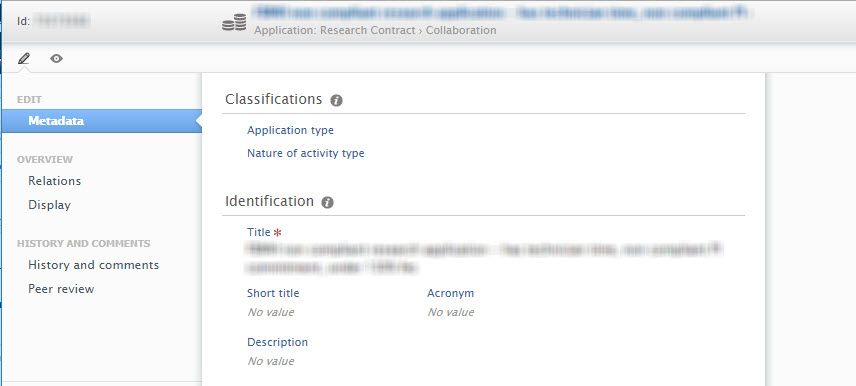
The applicant can then click on the Peer review tab of the Application editor window. If there are no documents in the Application, the applicant can add a document.
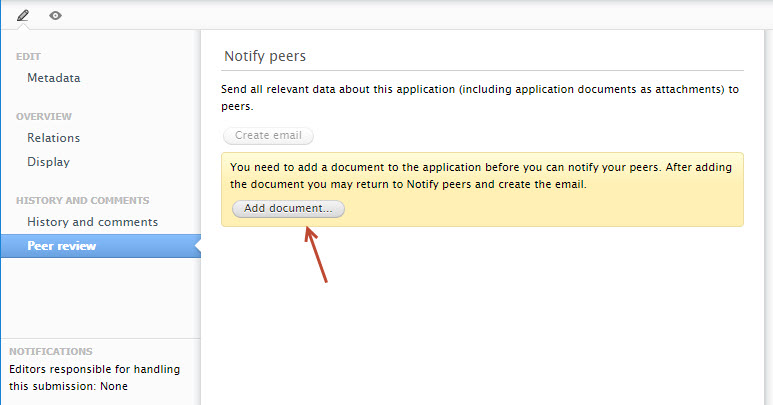
If there is already a document in the Application, and the applicant wants to add a new document for the Peer review request, the applicant can click directly to the metadata tab and add a new document to the Application.
Note: The applicant can only add documents, not delete them.

Once a document is added, the applicant can choose to create emails to invite others to review the document.
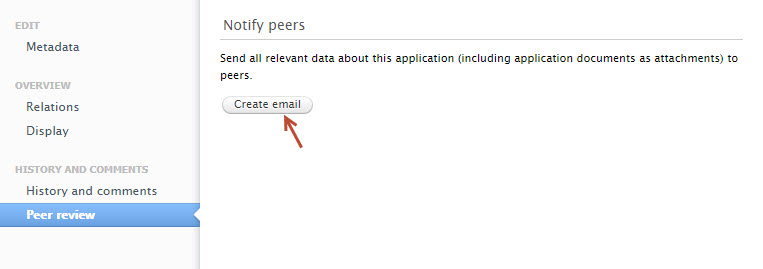 |
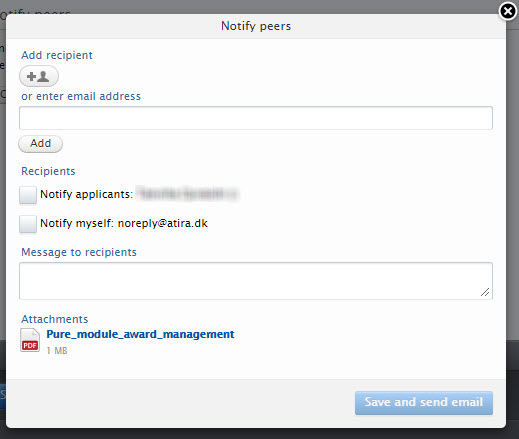 |
9. Funding discovery
9.1. Upgrade of Funding Discovery module
This release includes upgrades to the underlying service that is used to provide funding opportunities through the Funding Discovery module, one effect of which is more timely updating of funding opportunities.
Additionally, the new service includes:
- Improvements to the formatting of the opportunities received, resulting in more data visible on the opportunities and an enhanced ability to search over these fields.
- Updated fingerprinting, resulting in better fingerprint results on funding opportunities.
- Improvements to search behavior.
Click here for more details ...
Search behaviour in the Funding Discovery module has been improved, in particular:
- Acronym search.
- AND/OR search functions.
Aconyms | |||||||||
|---|---|---|---|---|---|---|---|---|---|
Previously, searching for acronyms in the Funding Discovery module would return only opportunities where the acronym was included in the full text of the opportunity, and would not find results where the name was included in full. The search has been improved to find results where the name of the funder is associated with an acronym in the record. For example:
|
Customers using the Funding Discovery module are requested to upgrade their Java 1.8 version to version 1.8.0_162-b12 or newer. Older versions cause SSL errors (SSL handshake failure from the secure HTTPS connection made from Pure to the Pure funding service).
10. Country-specific features
10.1. UK: REF2021: Phase 2
In this release, we have made a number of updates in the REF module relating to Open Access compliance functionality.
10.1.1. REF OA compliance monitoring: Updates due to confirmation of final policy
With the publication of the REF2021 Decisions on staff and outputs, we now have confirmation that the policy will require outputs to be deposited no later than 3 months after the date of acceptance from 1 April 2018. Outputs accepted between 1 April 2016 and 31 March 2018 (inclusive) require outputs to be deposited no later than 3 months after the date of publication. Pure's REF OA compliance monitoring has therefore been updated to monitor against Publication date for outputs accepted between 1 April 2016 and 31 March 2018. Outputs accepted on or after 1 April 2018 will continue to be monitored against the acceptance date.
Click here for details on the updates made ...
In implementing the final REF OA policy in Pure, we have made the following changes:
- Updated the Research Output editor to indicate which 'phase' of the policy applies to the output.
- Removed the configuration to set the date upon which to start monitoring OA compliance.
- Added an additional 'No full publication date input' status.
Updated Research Output editor to indicate applicable REF OA policy 'phase' | |||
|---|---|---|---|
The 'Assessment' section of the Research Output editor has been updated to include a new 'Applicable OA policy phase' field that indicates which 'phase' of the REF OA policy applies to the output:
The date displayed adheres to the following logic:
|
New 'No full publication date input' status |
|---|
Outputs in the 'Published date' phase of the REF OA policy require the full Publication date (either ePub ahead of Print or Published) in order to accurately monitor compliance with the REF OA policy. Accordingly, we have introduced a new REF OA Compliance status that flags up these Outputs.
This status will be generated when:
AND
Once either the full ePub ahead of print date or the full Publication date are provided, the REF OA Compliance Status will be updated to indicate compliance / not against the relevant policy requirements. |
'REF2021 OA compliance start date' configuration removed |
|---|
| Prior to 5.13, it was possible for you to set the date upon which to start monitoring REF OA compliance, using the 'REF2021 OA compliance start date' configuration. With the now confirmed policy requirements and the increased complexity of the REF OA compliance logic, we have removed this configuration. REF OA compliance will always be monitored from 1 April 2016, as per the policy requirements. If, prior to upgrade, your configuration was set to monitor REF OA compliance prior to 1 April 2016, any outputs with an Acceptance date prior to 1 April 2016 will have their REF OA compliance data removed. |
REF OA compliance end date introduced |
|---|
| We have introduced a policy end date of 31 December 2020 when monitoring REF OA compliance. This will ensure that when monitoring overall compliance with the REF2021 OA policy, only those outputs subject to the policy will be included. |
Exceptions |
|---|
|
The Draft guidance on submissions outlines the allowable REF OA exceptions. You should note the following:
|
Click here for details on what happens to your existing data upon upgrade to 5.13.0 ...
When you upgrade to 5.13.0, Pure will apply the updated policy rules to existing data, and will migrate existing content, where appropriate:
- Removal of 'Deposit on publication requirement met' exception where no longer relevant.
- Application of updated policy to all other applicable outputs.
In order to ensure as little fluctuation in your REF OA Compliance reporting as possible, you may wish to ensure that prior to upgrade, the full ePub ahead of print or Published date is input for all outputs with Accepted / In press dates between 1 April 2016 and 31 March 2018 (inclusive)
Application of updated policy to all other applicable outputs |
|---|
Upon upgrade to 5.13.0, Pure will run through all existing Research Output records and apply the updated REF OA policy rules. Accordingly, you may see REF OA compliance status changes for outputs in the Publication date phase. All outputs with an existing REF OA Compliance Status are listed in a log, accessible by the Administrator:
Why has the REF OA Compliance status changed?
Note that those outputs included in the second 'Deposit on publication requirement met' migration (see details below) may have their REF OA compliance status updated again as per the logic of that migration. |
Removal of 'Deposit on publication requirement met' exception where no longer relevant |
|---|
As described in the 5.7.0 release notes it has always been our intention to remove the 'Deposit on publication requirement met' exception for all those outputs in the Publication date phase of the policy (i.e. Acceptance date is between 1 April 2016 and 31 March 2018 (inclusive)) once the final policy was known and applied in Pure. Accordingly, the following will take place upon upgrade to 5.13.0. Publication date phase
Acceptance date phase
|
Further details are available in the REF2021 wiki.
10.1.2. REF OA monitoring: Summary screen updates
We have made a number of updates to the REF OA Monitoring screens:
- New 'Potentially subject to policy' column in the Overall compliance summary screen, identifying outputs where no full Acceptance date has been input and therefore are potentially subject to the REF OA policy.
- New 'No full publication date set' column in the Overall compliance summary screen, identifying outputs in the 'Publication date' phase where no complete publication date has been input.
- New hierarchical layout and grouping options for both REF OA monitoring screens.
- New grouping option by UoA of the associated REF2s.
Click here for more details ...
New 'Potentially subject to policy' column |
|---|
As described in the REF2021 wiki, a full Acceptance date must be input for Pure to monitor REF OA compliance – if only a year or year+month is input, REF OA compliance will not be monitored. In order to help you identify outputs that might potentially 'fall through the cracks' as the full Acceptance date has not been input, the REF OA monitoring: Overall compliance summary screen has been updated to include a column identifying outputs that are 'Potentially subject to the policy'. The new 'Potentially subject to policy' column uses the following logic:
Contribution to journal Contribution to specialist publication Chapter in Book/Report/Conference proceeding > Conference contribution
Acceptance date is null OR incomplete (and in that case between 2016 and 2020 (inclusive)) AND At least one of the Acceptance, ePub, or Published dates are between 2016 and 2020 (inclusive) So, for example, the following output publication states and dates would be captured in this column:
Once the full Acceptance date has been input, the output will be removed from the 'Potentially subject to policy' column.
Additionally, a new 'REF2021 OA Output potentially subject to policy' filter has been introduced for Research Outputs.
|
New 'No full publication date set' column |
|---|
As described above, Outputs in the 'Published date' phase of the REF OA policy require the full Publication date (either ePub ahead of Print or Published) in order to accurately monitor compliance with the REF OA policy. Accordingly, we have introduced a new REF OA Compliance status that flags up these Outputs, and we have updated the REF OA monitoring: Overall compliance summary screen to include a column identifying these outputs. |
New hierarchical layout and grouping options for Managing organisation |
|---|
On both REF OA monitoring screens, when grouping content based on Managing organisation, we have introduced a hierarchical layout, enabling you to more easily see Organisations and their children/parents.
Additionally, we have introduced the option to select the hierarchical level on which to group. For example, if you only want to view the data by Faculty, hiding individual Schools and Departments, you can select that hierarchical level, and all underlying content will be rolled up and reported by Faculty.
By default, the grouping is on level 5 of your organisational hierarchy. Anything beyond level 5 is rolled up to be included its parent value(s). Notes:
The ‘Total number of unique outputs’ row at the bottom of the table resolves any duplicates |
New grouping option by UoA of associated REF2s |
|---|
On both REF OA monitoring screens, we have introduced a new grouping option that enables you to limit the screen to only show those outputs with associated REF2s, grouped by the UoA(s) of the associated REF2s.
|
10.1.3. REF OA compliance status now shown on REF2 record
We have updated the REF2 editor to indicate the REF OA compliance status (synchronised from the associated Research Output)
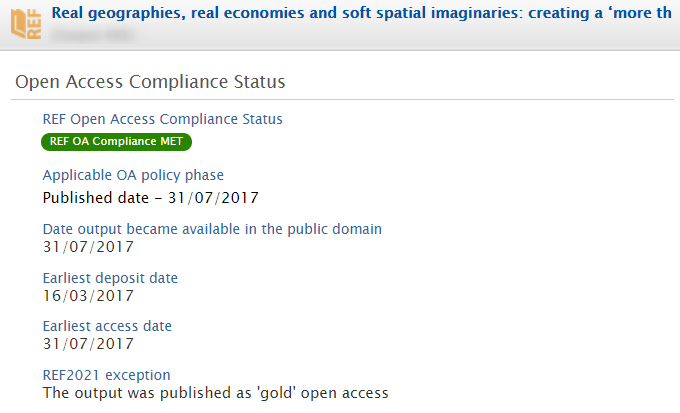
Additionally, it is possible to filter REF2 records by REF OA compliance status properties (in the Editable list, the 'classic' reporting module, and the new reporting module):
- REF OA compliance status.
- Output has REF2021 exception (filters for whether an exception has been selected or not)
- REF2021 exception.
10.1.4. Re-naming of 'Not REF eligible' REF OA compliance status
Given the expectation that there will be some allowance for outputs that do not meet the policy requirements nor have an exception applied, we have re-named the 'Not REF Eligible' REF OA compliance status as 'NOT compliant - confirmed'.
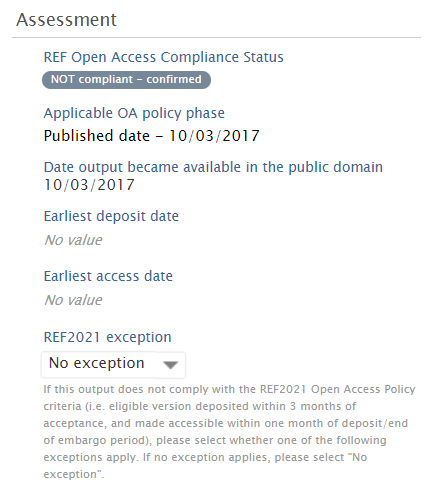 |
 |
10.1.5. New "Compliant outputs with 'No exception' selected" editorial task
Outputs that are compliant with the REF OA policy in their own right (by meeting the Deposit and Access requirements) but where the 'No exception' exception has also been selected in error, these outputs are counted in the "Compliant - Exception applies" column of the REF OA Monitoring: Overall compliance summary screen, resulting in an overstatement of the Exception rate.
We have introduced an Editorial task for Administrators and REF Administrators to easily identify these records.
Click here for more details ...
This release includes a new "Compliant outputs with 'No exception' selected" editorial task for Administrators and REF Administrators. This task identifies those outputs that are compliant with the REF OA policy in their own right (by meeting the Deposit and Access requirements) but where the 'No exception' exception has also been selected in error (the 'No exception' exception should only be applied when confirming that an output that has not met either the Deposit or Access requirements, and no exception applies - making the output non-compliant).
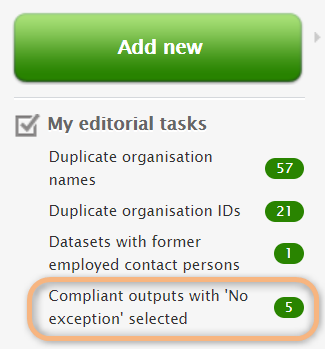
Notes:
- This Editorial task is by default DISABLED, but can be enabled via the My editorial tasks 'gear' icon.
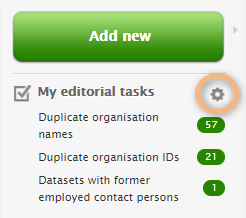 |
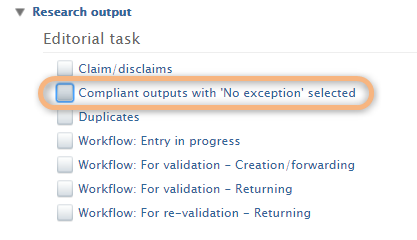 |
10.1.6. New 'REF2021 Exception' bulk action
To aid users in actioning the new "Compliant outputs with 'No exception' selected" editorial task, we have introduced a new 'REF2021 Exception' bulk action on Research Outputs, enabling you to edit REF2021 OA exceptions in bulk.
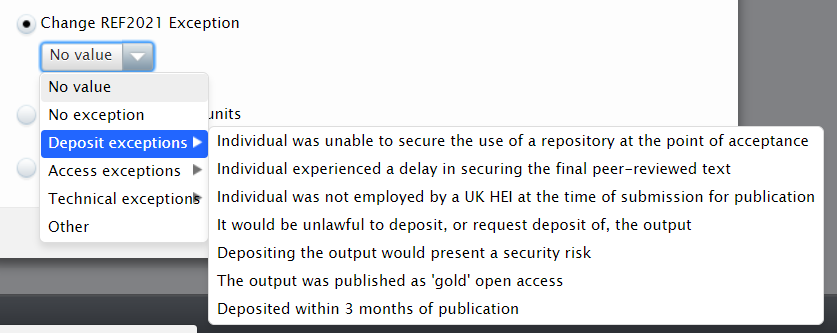
When using this bulk action to remove the 'No exception' value from otherwise compliant outputs, select 'No value' for the 'REF2021 Exception'. This will remove the 'No exception' value, retain the Compliant status for the output(s), move the output(s) from the 'Compliant (exception applies)' column in the REF OA Monitoring: Overall compliance summary screen to the 'Compliant' column, and the Exception rate will be re-calculated.
10.2. Netherlands: SEP/KUOZ enhancements
Following on from updates delivered in the 5.12.1 release, this 5.13.0 release includes a number of enhancements to SEP/KUOZ functionality, as prioritised by the Dutch User Group.
10.2.1. Export to Excel option for all SEP and KUOZ tables
In response to requests for the SEP/KUOZ tables to display more years of data (which unfortunately is not possible without compromising the user experience), we have instead delivered the function to be able to export SEP/KUOZ tables to Excel.
By default, SEP/KUOZ tables will continue to only display up to:
- 6 years of data for SEP.
- 3 years of data for KUOZ.
But should the user wish to view more (up to 10 years), there is now an 'Export to Excel' option available. The table on screen will continue to be limited as per the ranges described above, but the full range (up to 10 years) will be available upon export.
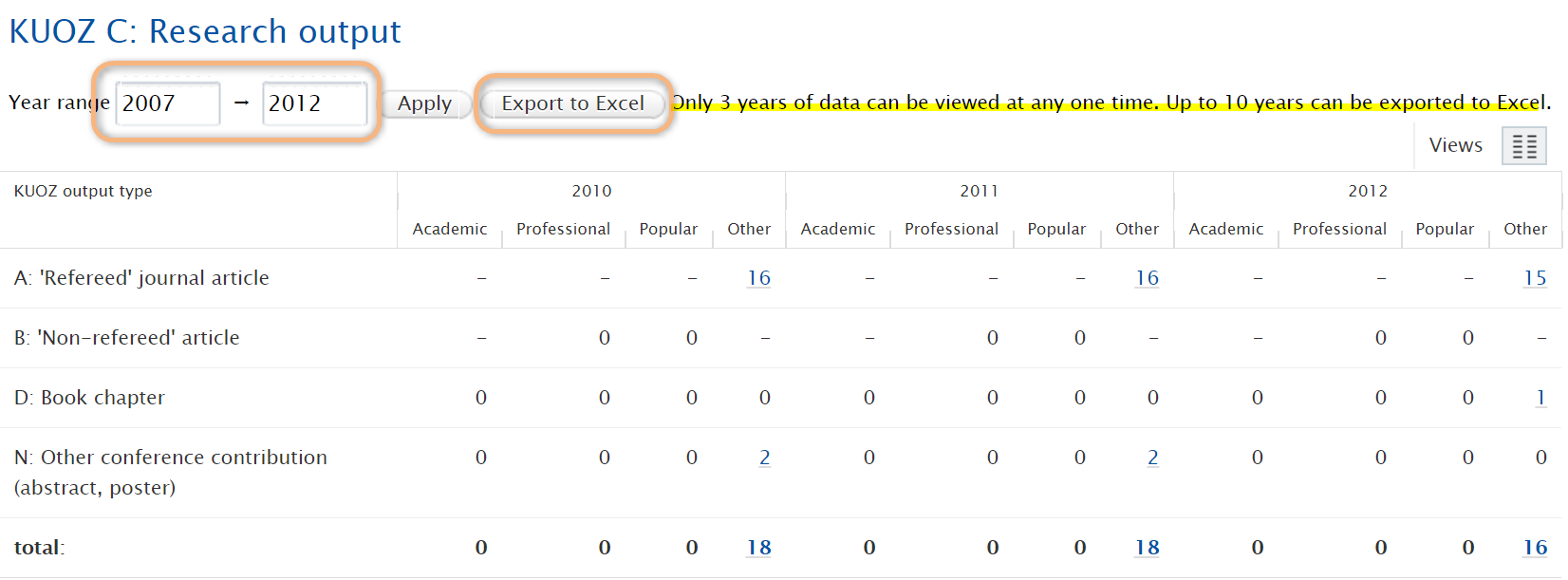
10.2.2. Visibility configurations expanded to include visibility of SEP/KUOZ tab on Persons
We have expanded the SEP/KUOZ visibility options to include the visibility of the SEP/KUOZ tab on the Person record. We have also consolidated the existing SEP and KUOZ type visibility configuration on Outputs, Activities, Prizes, and Press/Media into a single configuration.

Depending on your settings prior to upgrade, the first configuration may either be DISABLED or ENABLED - it is recommended you check your configuration upon upgrade. The "SEP/KUOZ tab in Person editor window visible only to Editors/Administrators" configuration is by default DISABLED (meaning that by default, Personal users can see the SEP/KUOZ tab on their Person record).
10.2.3. Updated FTE/MJE and Funding data import file
We have updated the FTE/MJE and Funding data import file template to support the following additional information:
- Additional IDs beyond just the Pure ID (e.g. Employee ID, Scopus Author ID, External source IDs).
- Inclusion of Employment type and Job title details, enabling users to better define FTE splits when an individual has multiple organisational affiliations in a single calendar year.
Further information is available in the SEP wiki.
10.2.4. Warning message to highlight impact on SEP/KUOZ FTE if Organisational unit affiliation period is updated
Previously, if an Organisational affiliation was edited such that the year of a SEP/KUOZ FTE input was no longer valid, the SEP/KUOZ FTE was simply deleted. In this release, we have introduced warning messages to inform the user if a change to an Organisational affiliation will impact on the captured SEP/KUOZ FTE. This is available both in the Person editor (if the Org affiliation is manually edited) and in the Person sync job:
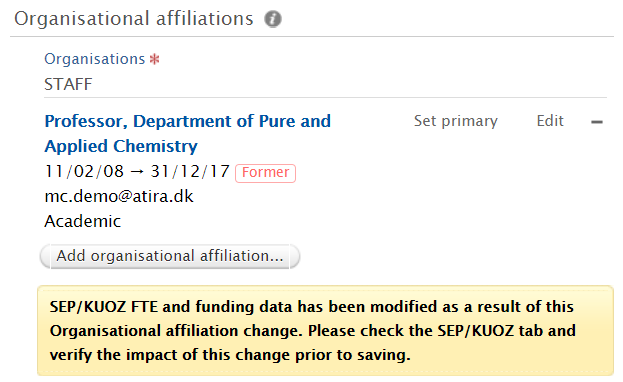 |
 |
10.2.5. Improved display of SEP/KUOZ content on Person record
In response to user feedback, we have made some improvements to the display of SEP/KUOZ content on the Person record:
- Display not only Organisational unit name, but also type
- Ensure that the order of Organisational units in the SEP/KUOZ screen reflects the order in the main Person editor
- By default, any Organisation affiliations with no SEP/KUOZ FTE data are collapsed
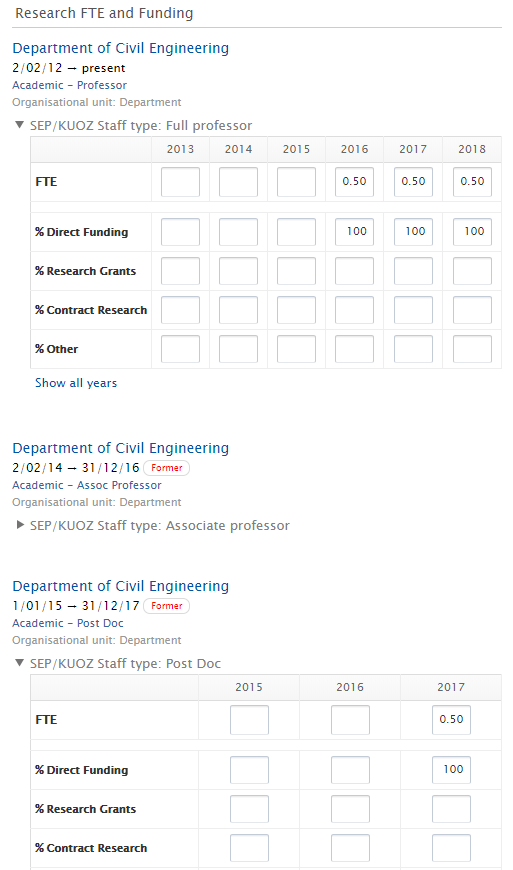 |
 |
10.2.6. New SEP/KUOZ Reporter role
We have introduced a new Organisational SEP/KUOZ Reporter role. This role can view the following content as 'read-only' (expanded view), along with the SEP/KUOZ tables:
- Persons
- Research Outputs
- Activities
- Prizes
- Press/Media
Further detail on SEP/KUOZ user roles is available here.
10.3. Australia: Validation on FoR % apportionments outwith ERA module
In relation to issues raised in PURESUPPORT-23599 - Research Output and Person - Field of Research (FoR) % apportionment field should not allow 0 or blank value RELEASED , since 5.8 we have made updates to non-ERA content such that FoR assignments must have a percentage apportionment greater than 0, and the total FoR % apportionment must be equal to 100%.
Click here for more details ..
We have introduced validation such that individual records cannot be saved if the FoR percentage apportionment does not add up to 100%, or any individual FoR's percentage apportionment is null or zero.
This relates to the following non-ERA content types:
- Person
- Research Output
- Activity
- Project
- Award
- Application
In order to help you identify existing content where the FoR % apportionment does not equal 100%, or where there are any FoRs with no % apportionment, we introduced a "Field of Research Apportionment Correction" job. This job corrects FoR percentages whenever it can do so without removing manually input percentage allocations:
- If there is only 1 FoR and it's % apportionment is not 100%, the job will change it to 100%
- If there are multiple FoR assignments, and they are all 0 or not set, the job will evenly allocate the % apportionment across the assigned FoRs
- Where the total FoR apportionment is equal to 100%, but there are individual FoRs with zero % allocation, the job will log these so you can update the records manually.
11. Additional features of this release
11.1. Visibility of content: Revised information text when enabling confidential content
Previously, 'Locked' users were included in the list of users for whom Confidential content would be visible. In this release, we have rectified this such that 'Locked' users are no longer included in this list. Additionally, email addresses associated with users in this list have been de-duplicated, and technical and vendor support user roles have been classed in a separate 'Technical' group.
This improvement is available for all content types where Confidential visibility is available.
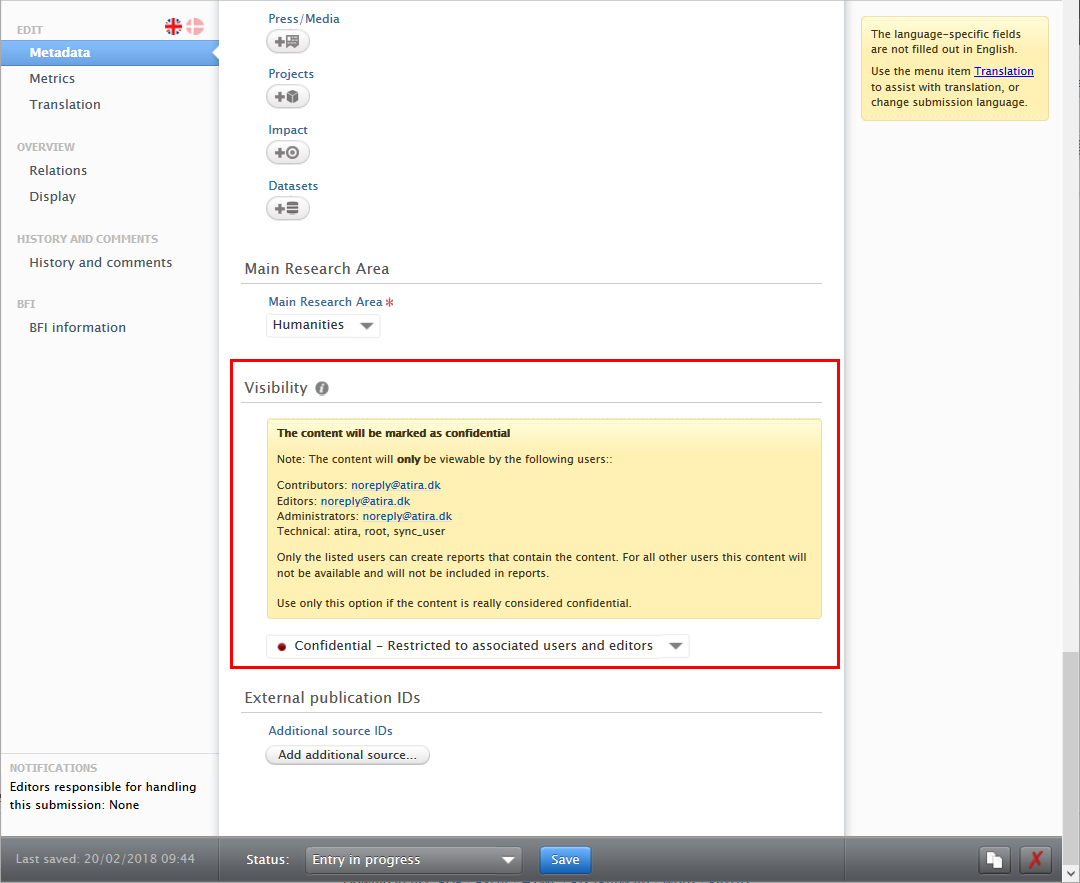
11.2. Personal profile: Student users now able to edit profiles
Previously, only specific Pure customer bases had the ability to enable their student users (users with only a student affiliation) to modify their personal profiles. This functionality has now been extended to all Pure customer bases.
As this functionality is tied with the ability for all Personal users to edit their profiles, it is enabled via Administrator > System Settings > Person > toggle on Show edit profile button.
11.3. Personal profile: File size limit for Profile photos
In order to reduce load times for Personal profile pages and Pure Portal pages, new Profile photos uploaded to a user's Personal profile are now limited to 1MB. Previously uploaded pictures that exceed this file limit will not be affected.
11.4. User documentation: Dynamic loading
The user documentation within Pure (accessed from Help and support > Manual) can now be loaded dynamically from S3 buckets rather than accessed as static HTML pages from within your Pure instance (as in previous versions).
This means that the documentation can be updated to address any errors or missing information without you having to upgrade your version of Pure.
Click here for more details ..
You can configure whether the Help and support > Manual link should access a set of static HTML pages and PDFs installed with your Pure, or query an S3 bucket to load this HTML and PDFs dynamically.
By default all Pure instances will automatically switch to the dynamic documentation from version 5.13.0. If you do not wish to use the dynamic documentation, you can disable this by setting Administrator > System settings > Help > Use the online version of Pure manual to false.
The dynamic documentation is hosted in various regions around the world to ensure that the documentation loads quickly for you (the fastest-loading region is chosen). The advantage of dynamic loading is that the documentation can be frequently updated to include more content and correct errors, as well as that usage analytics (if enabled in your Pure instance) are also enabled on the documentation pages.
The analytics will be used to see which search queries users enter and which pages of the documentation they visit frequently, which will help inform product development by indicating areas that are not intuitive to use, highlight answers to frequently asked questions and to identify areas that are lacking documentation.
Published at January 04, 2024

